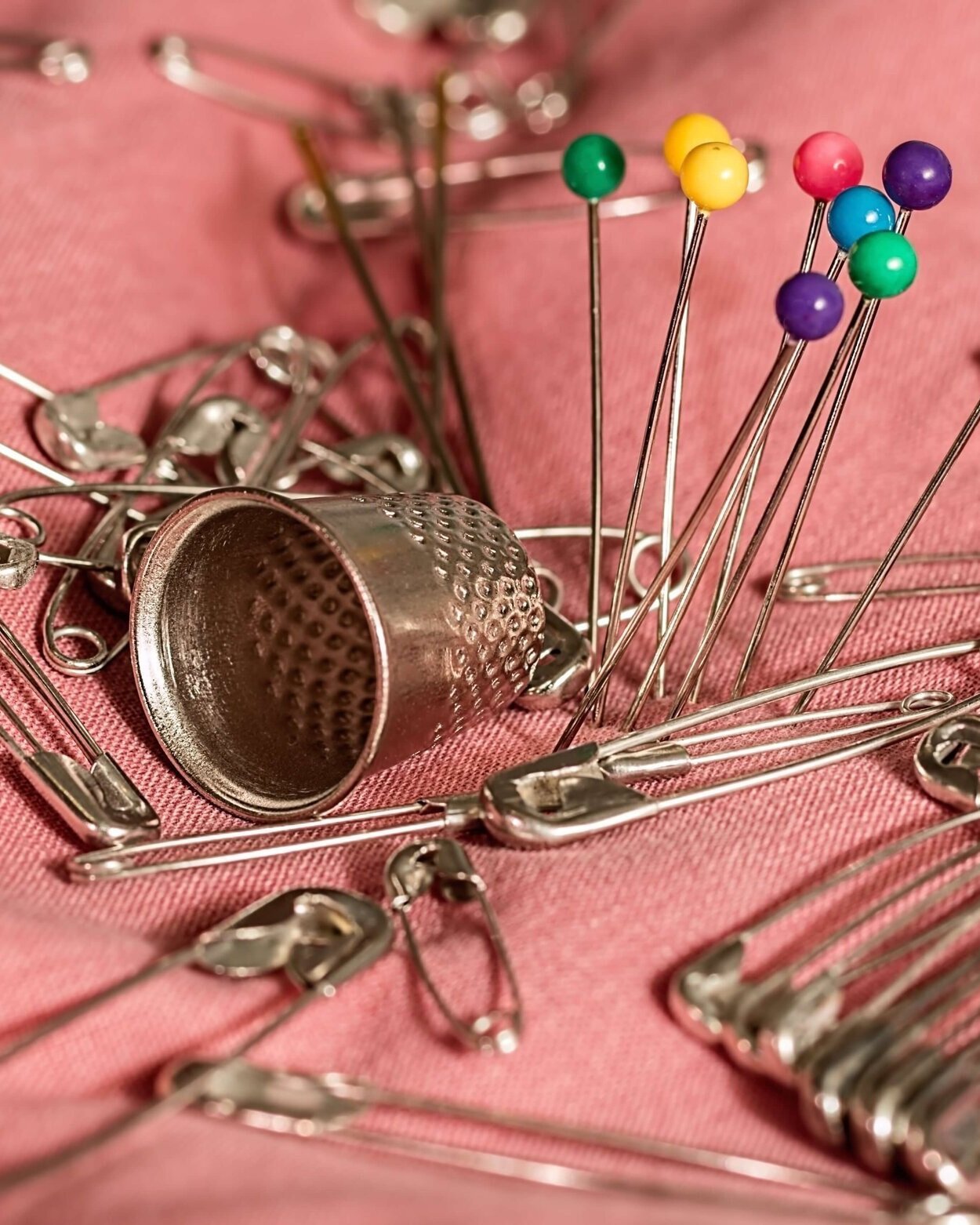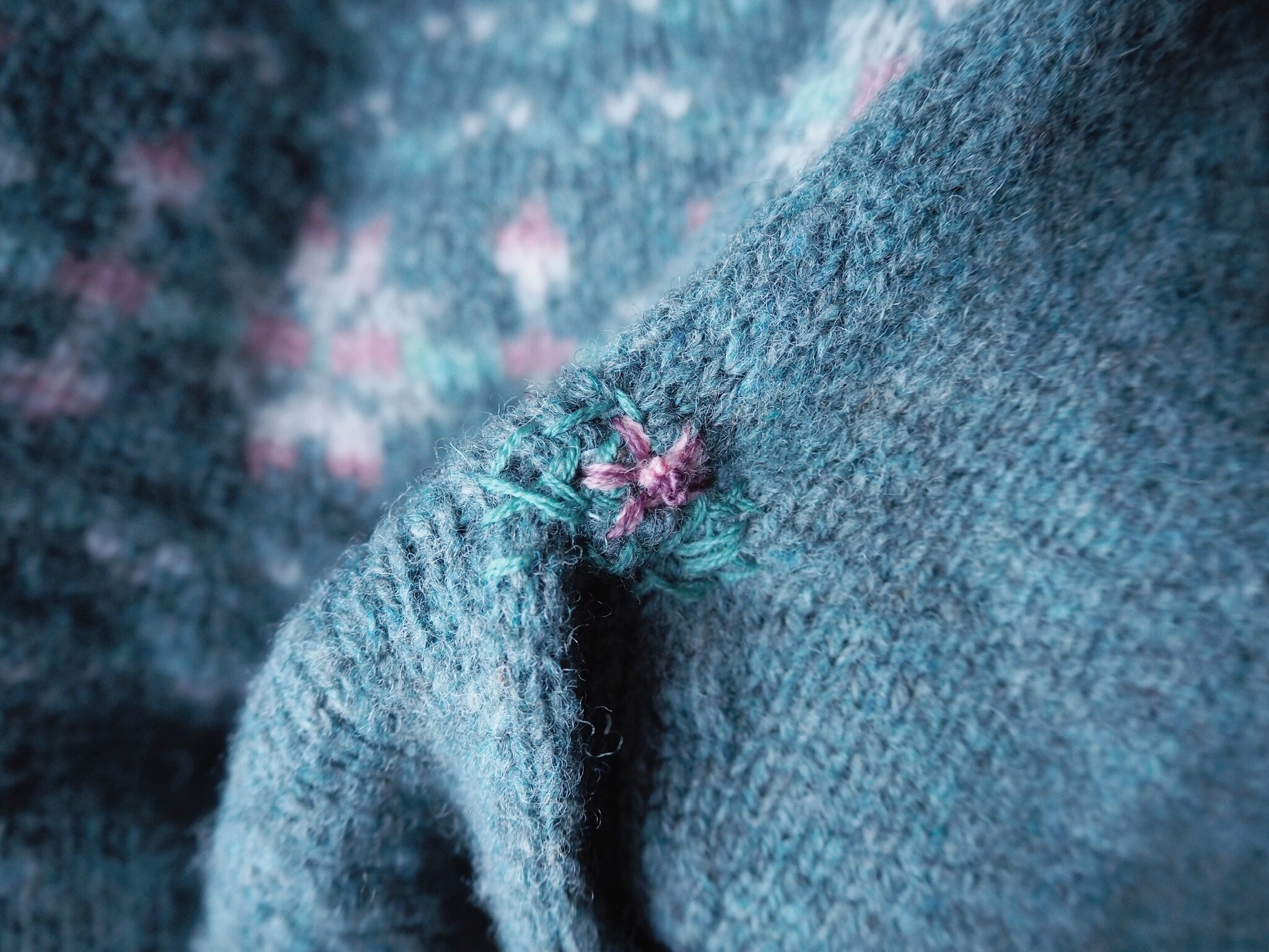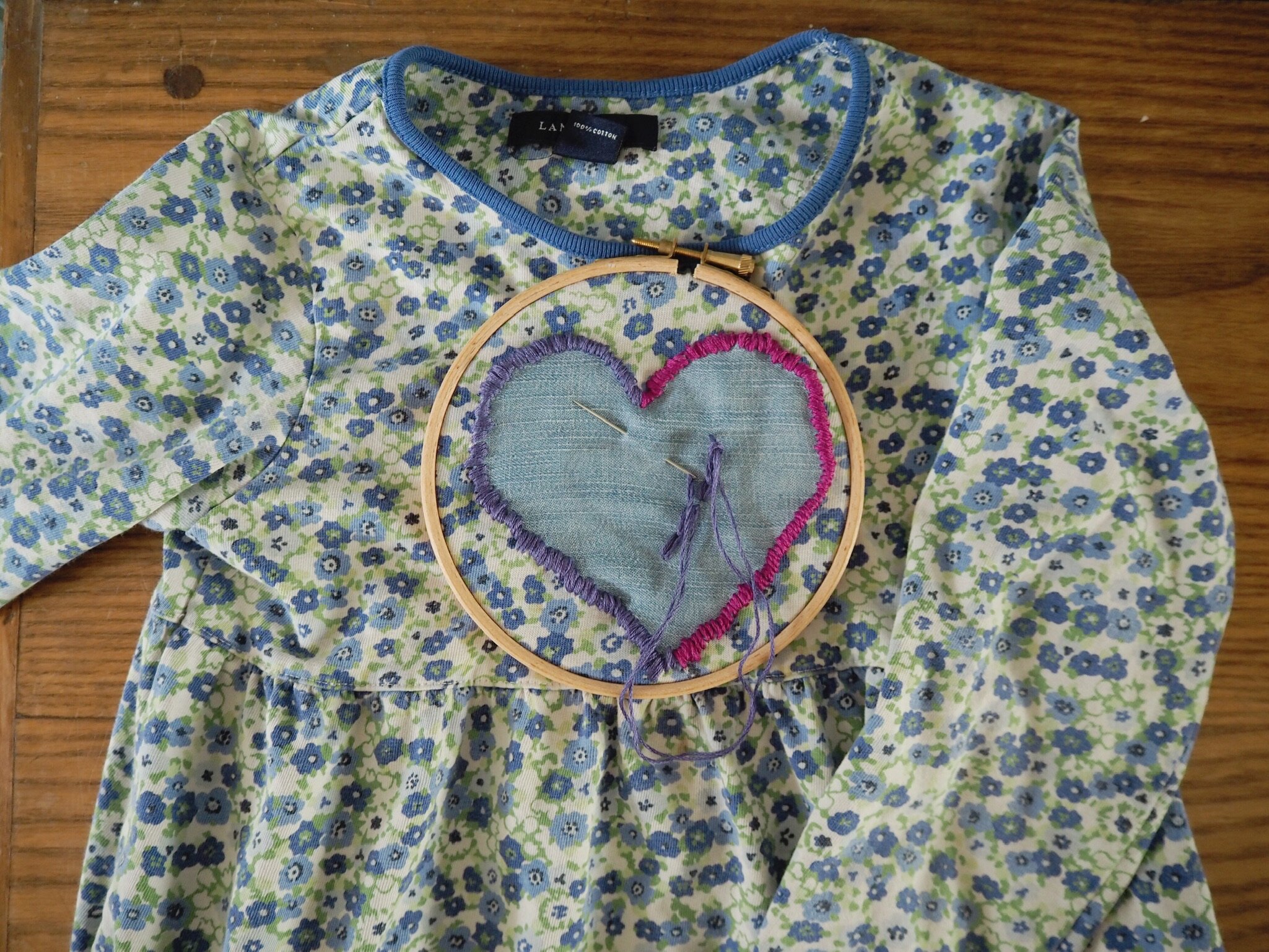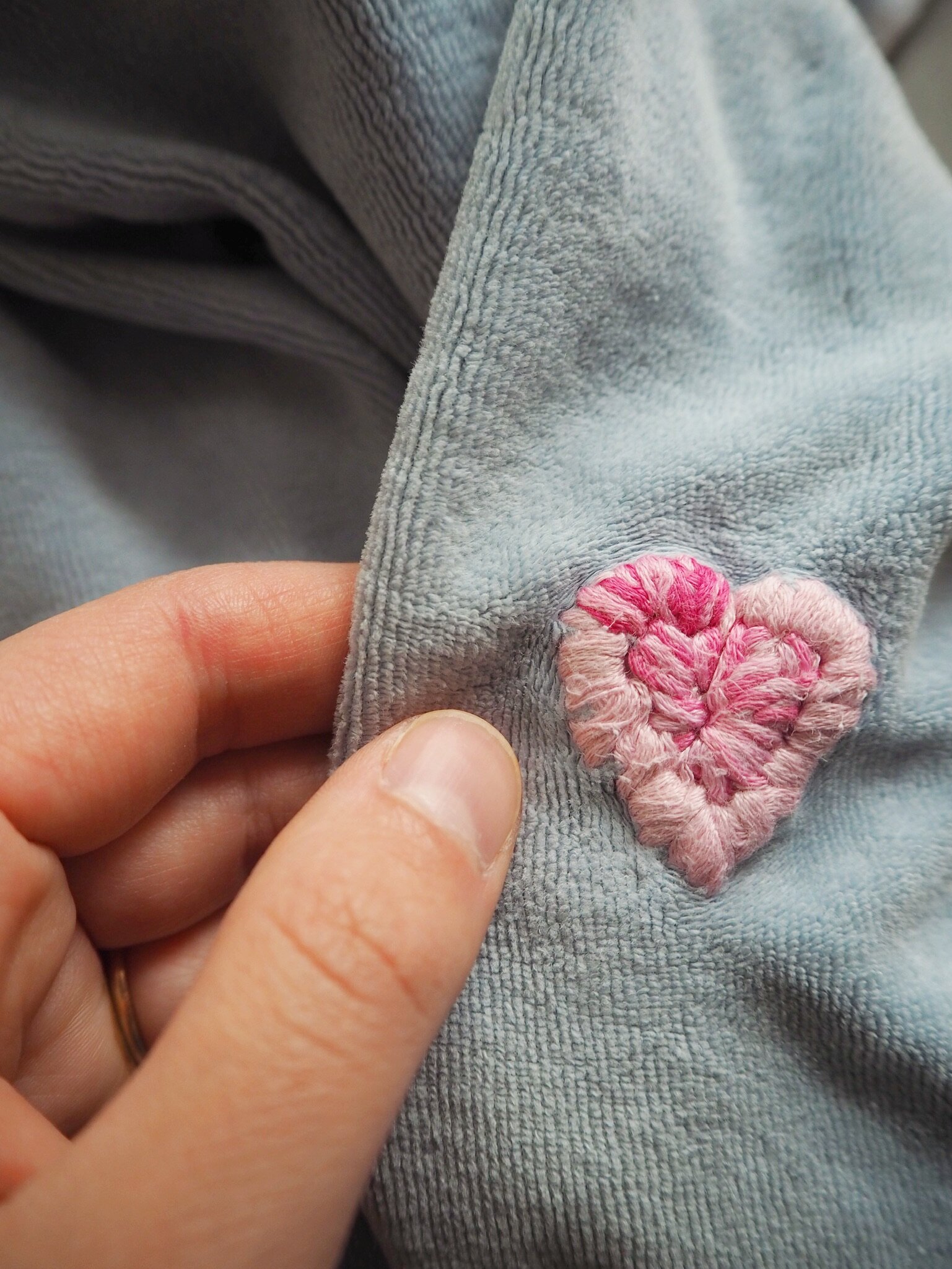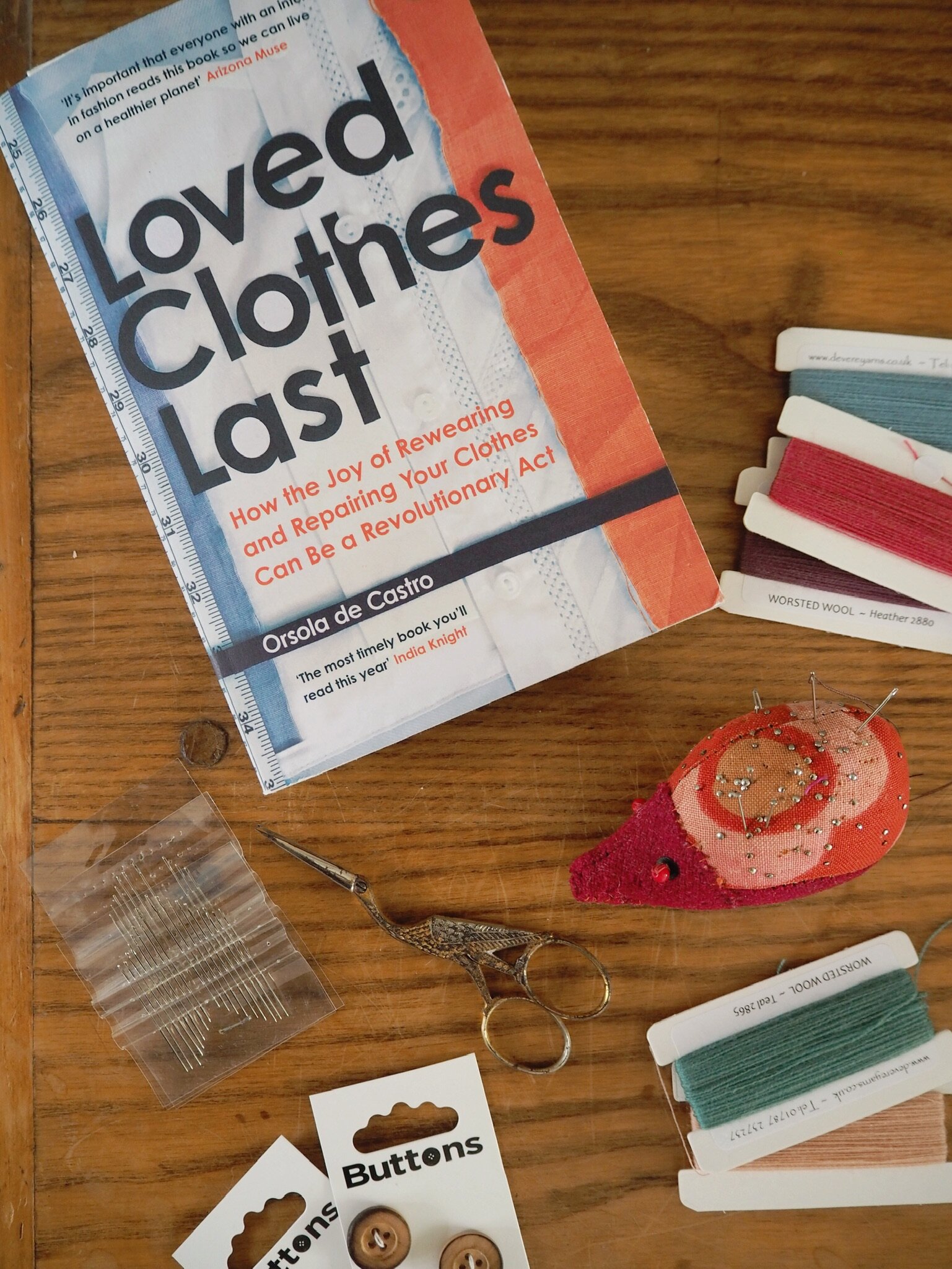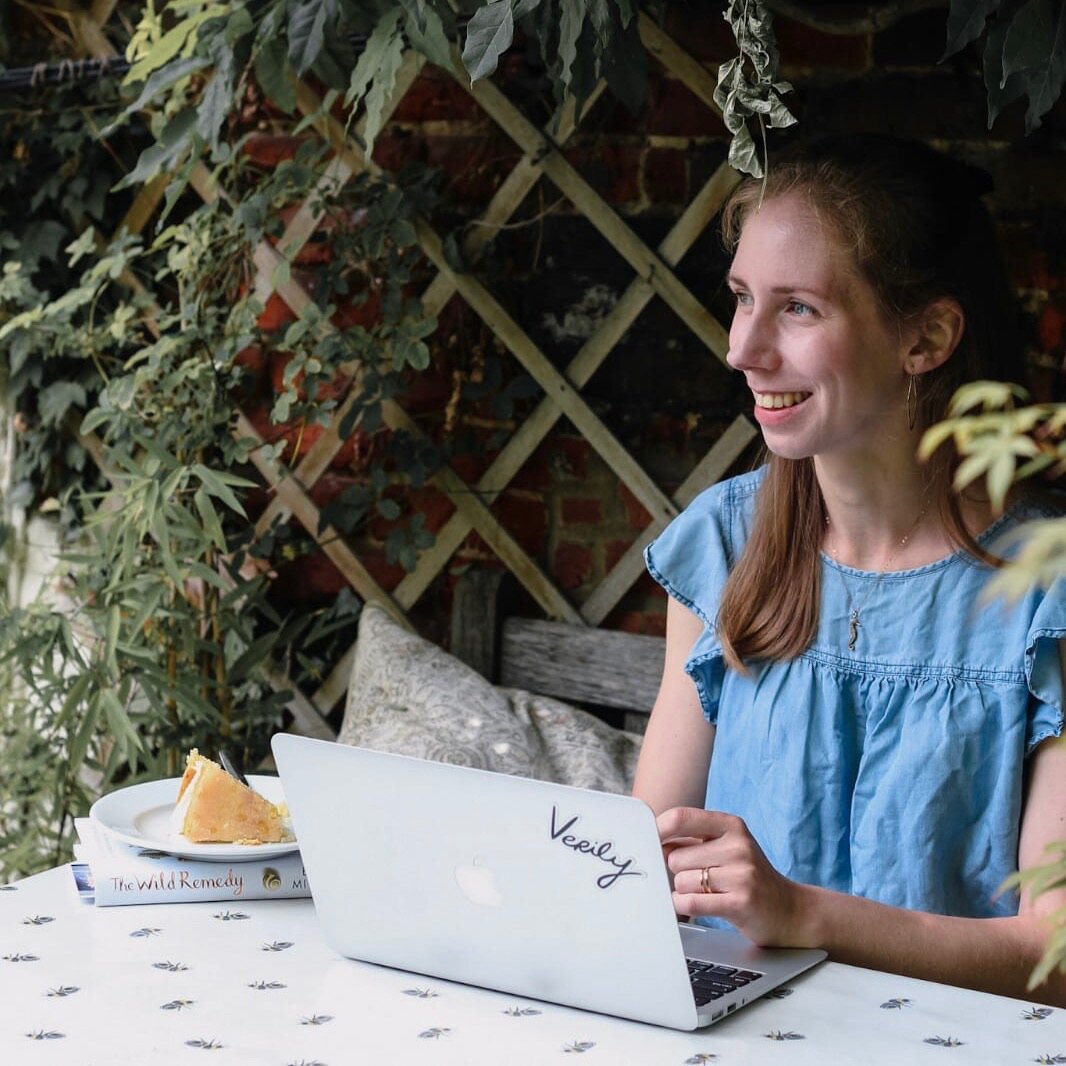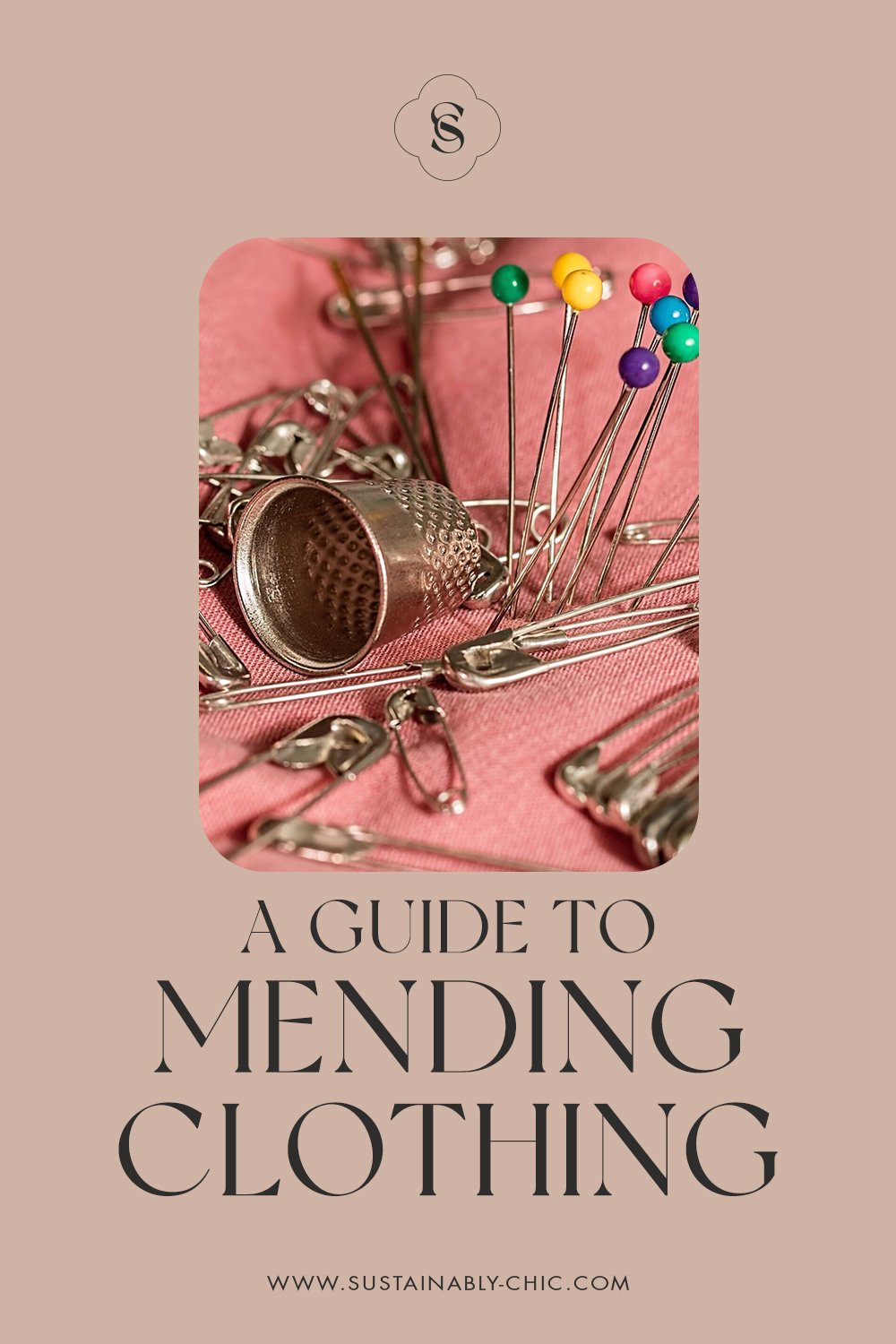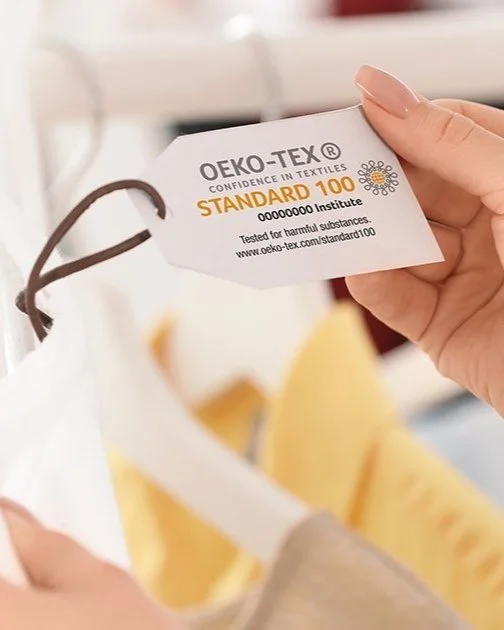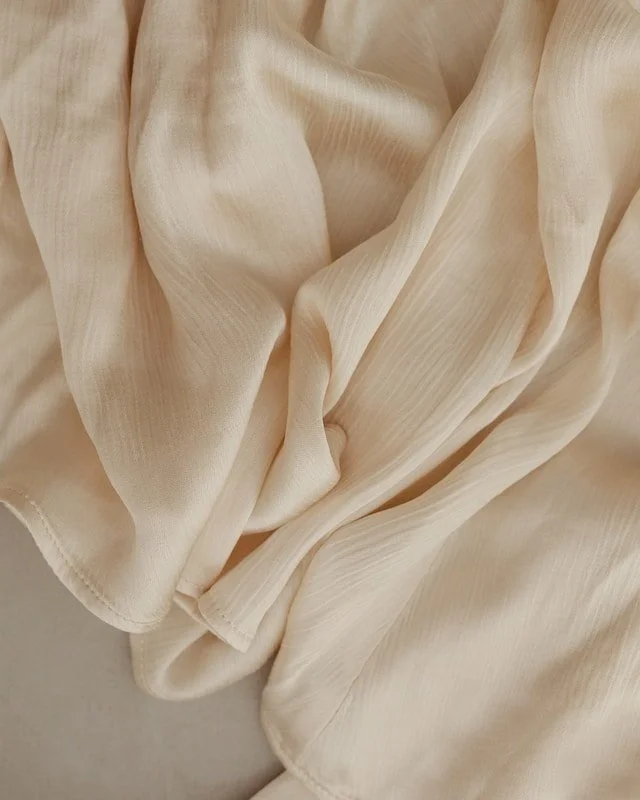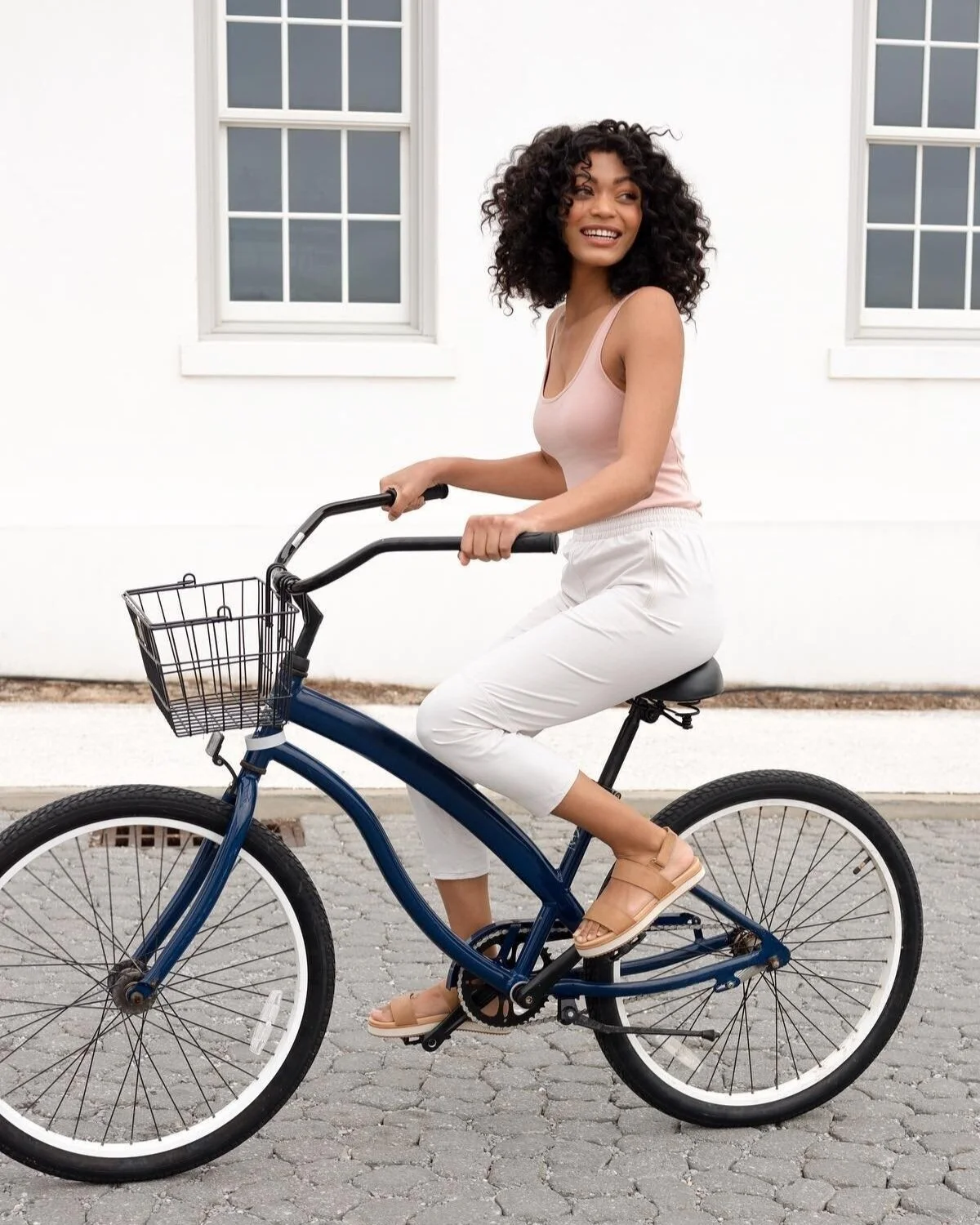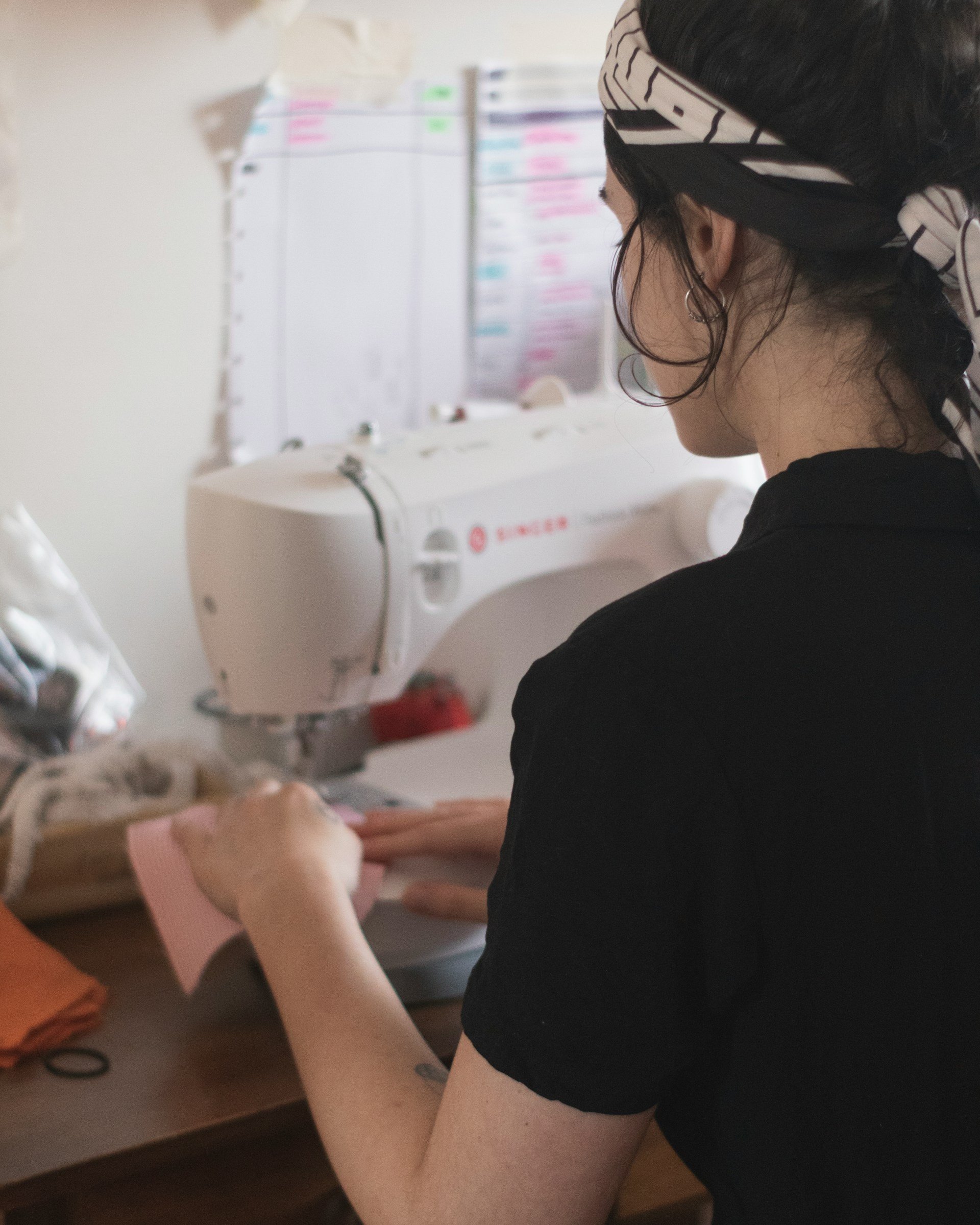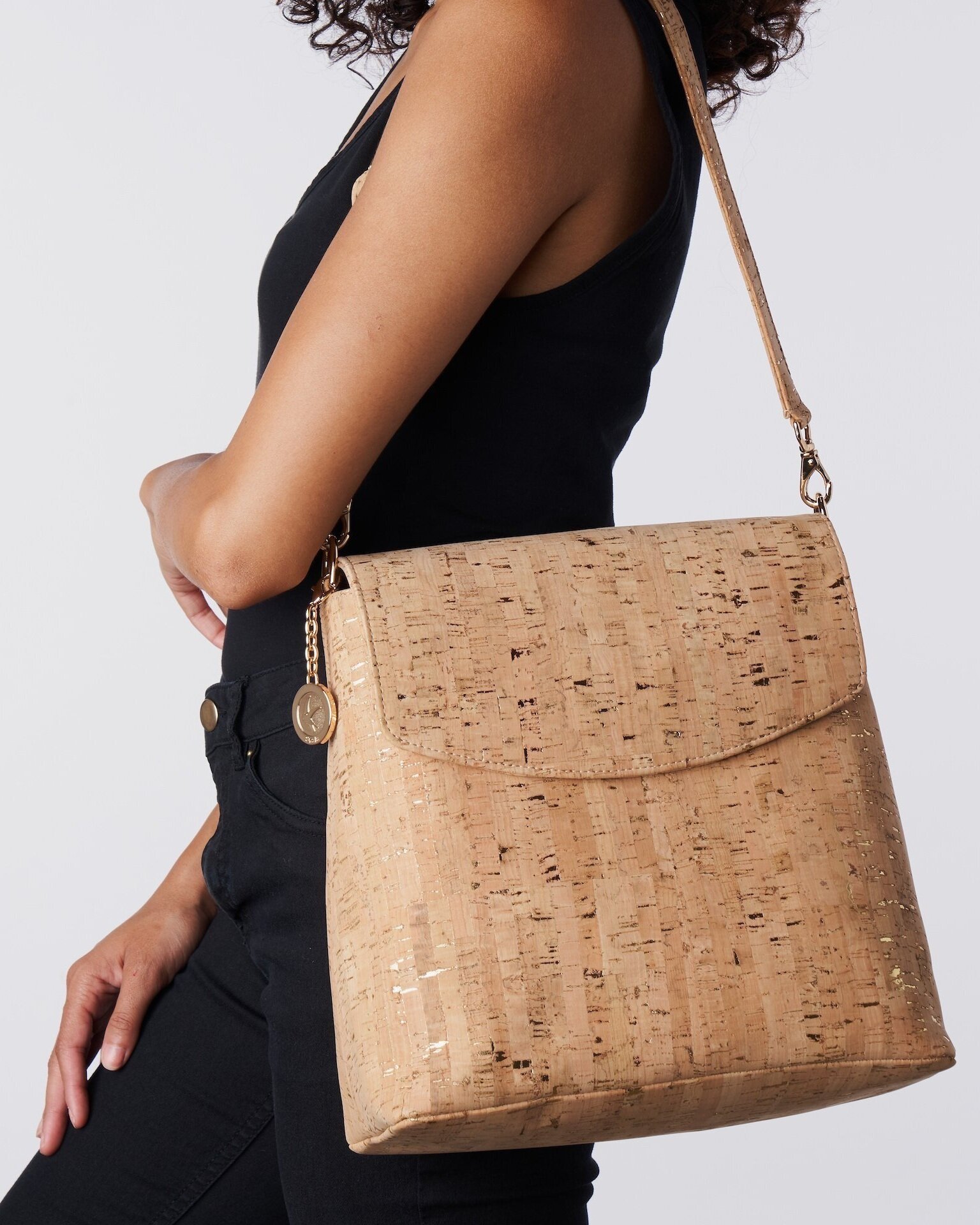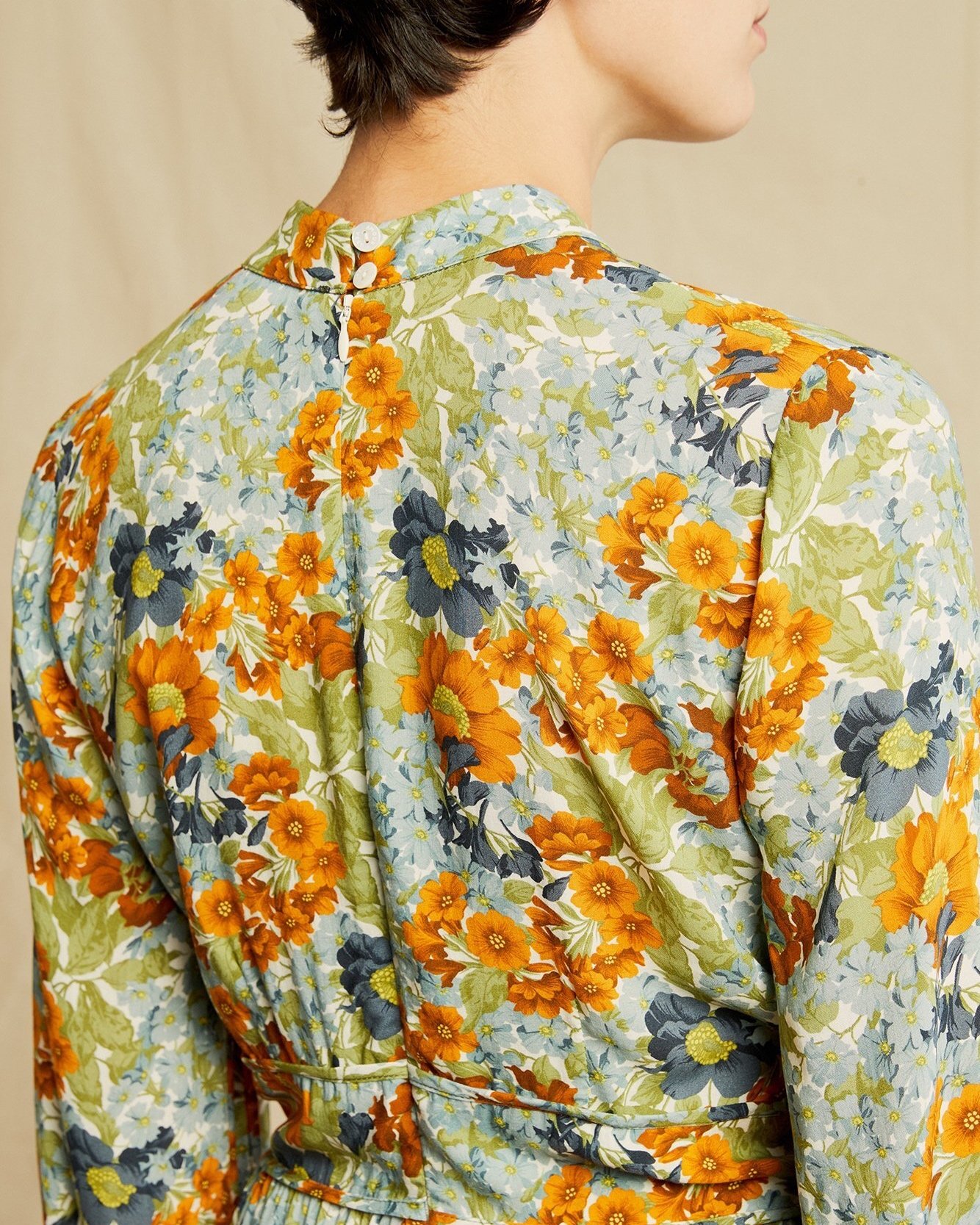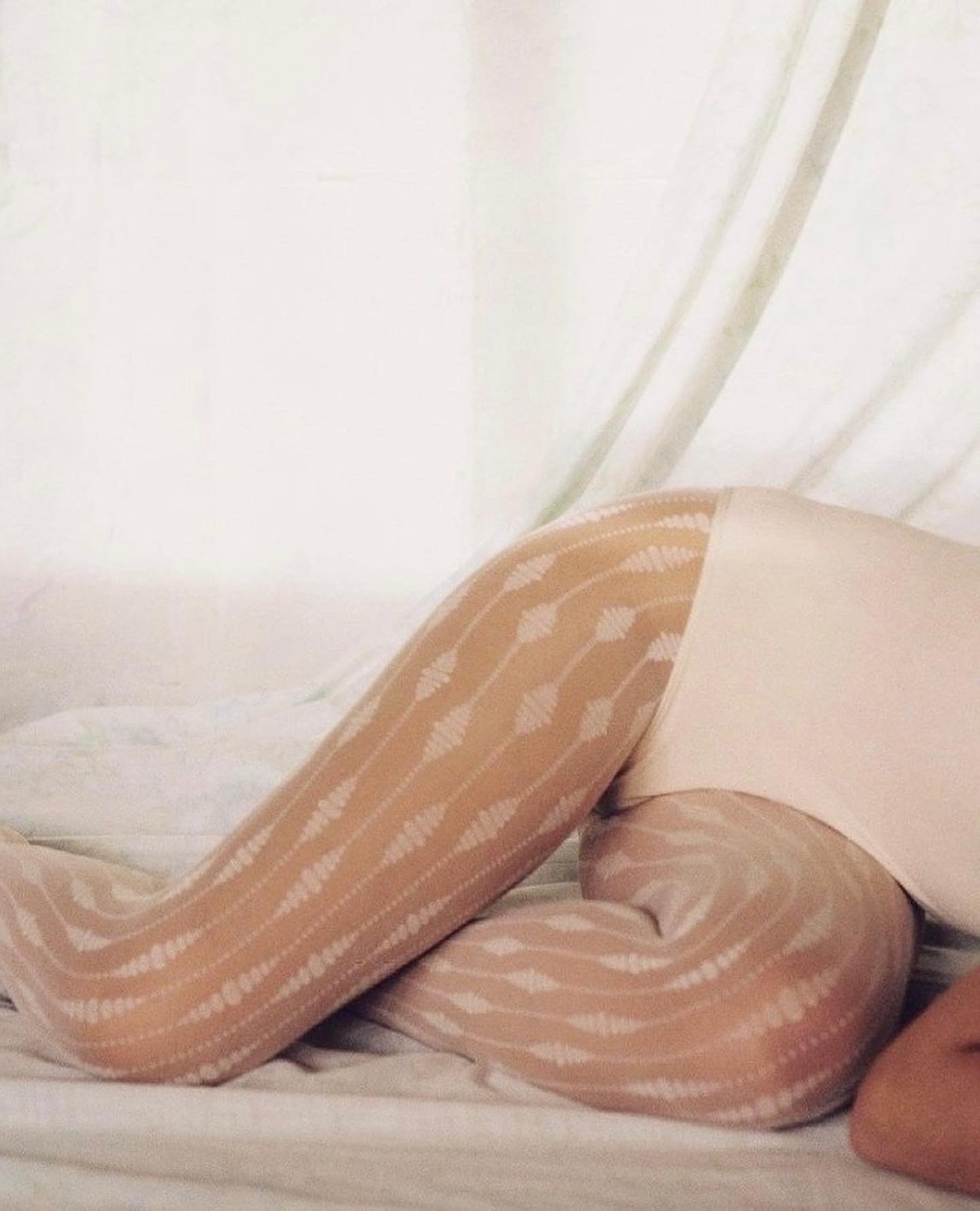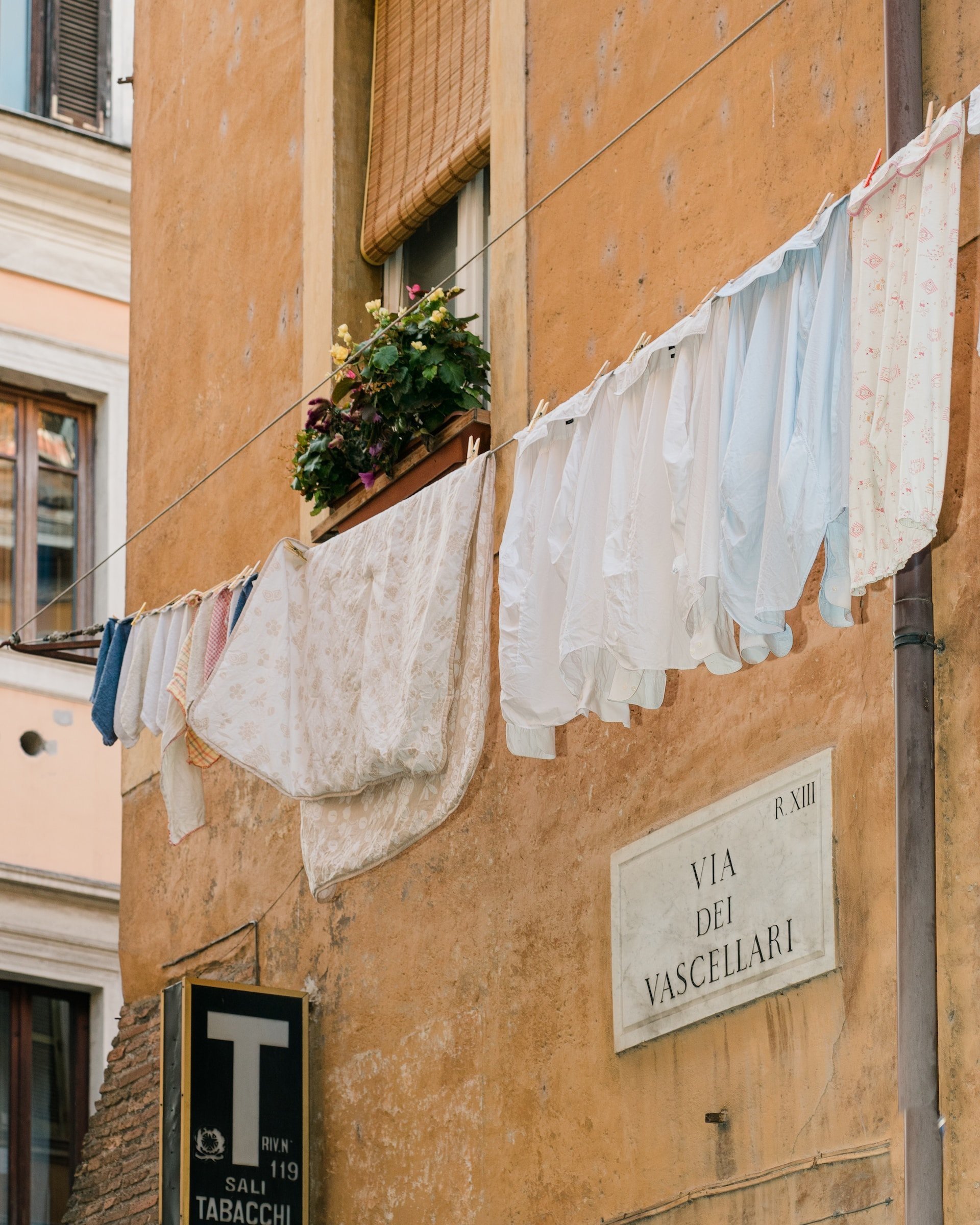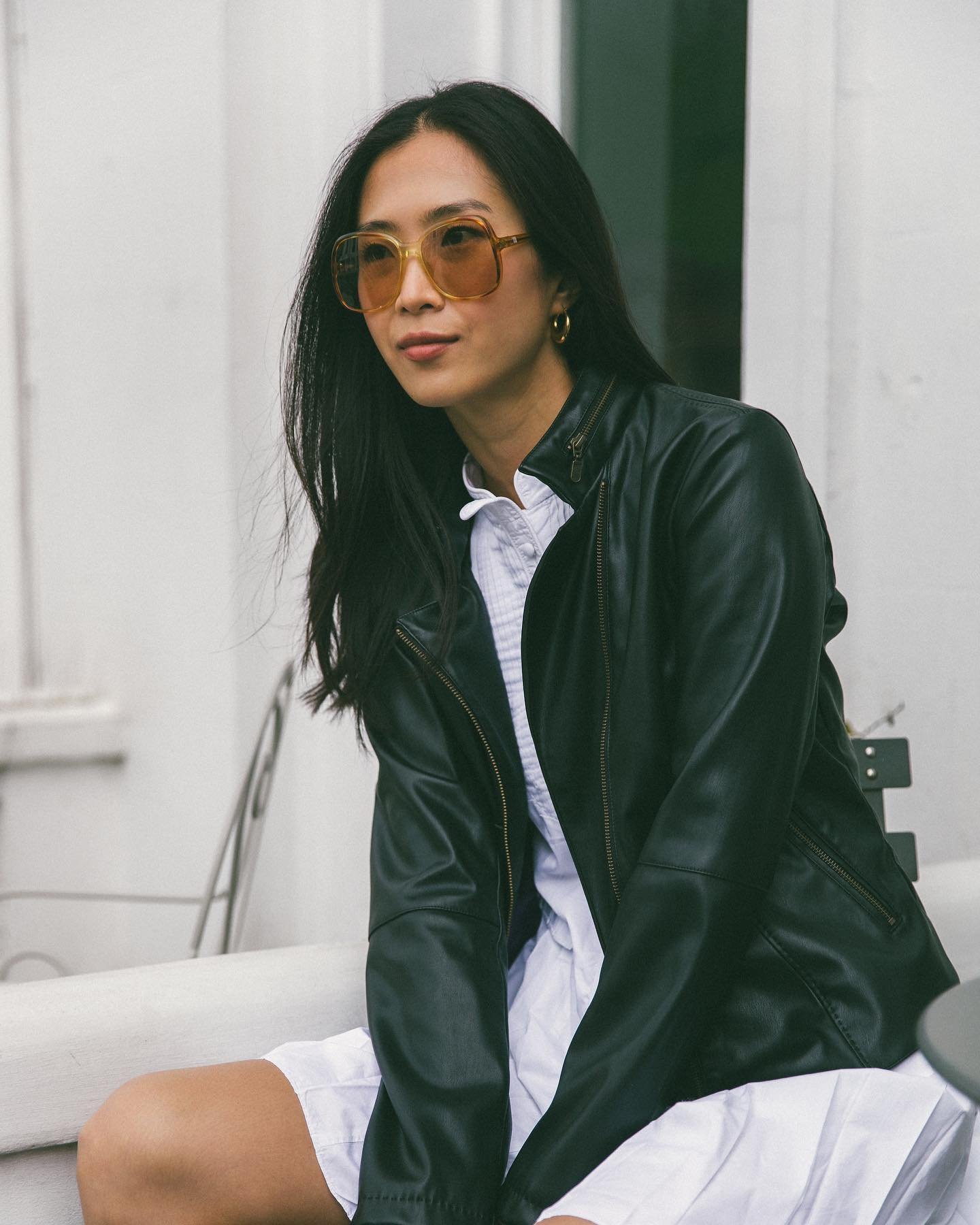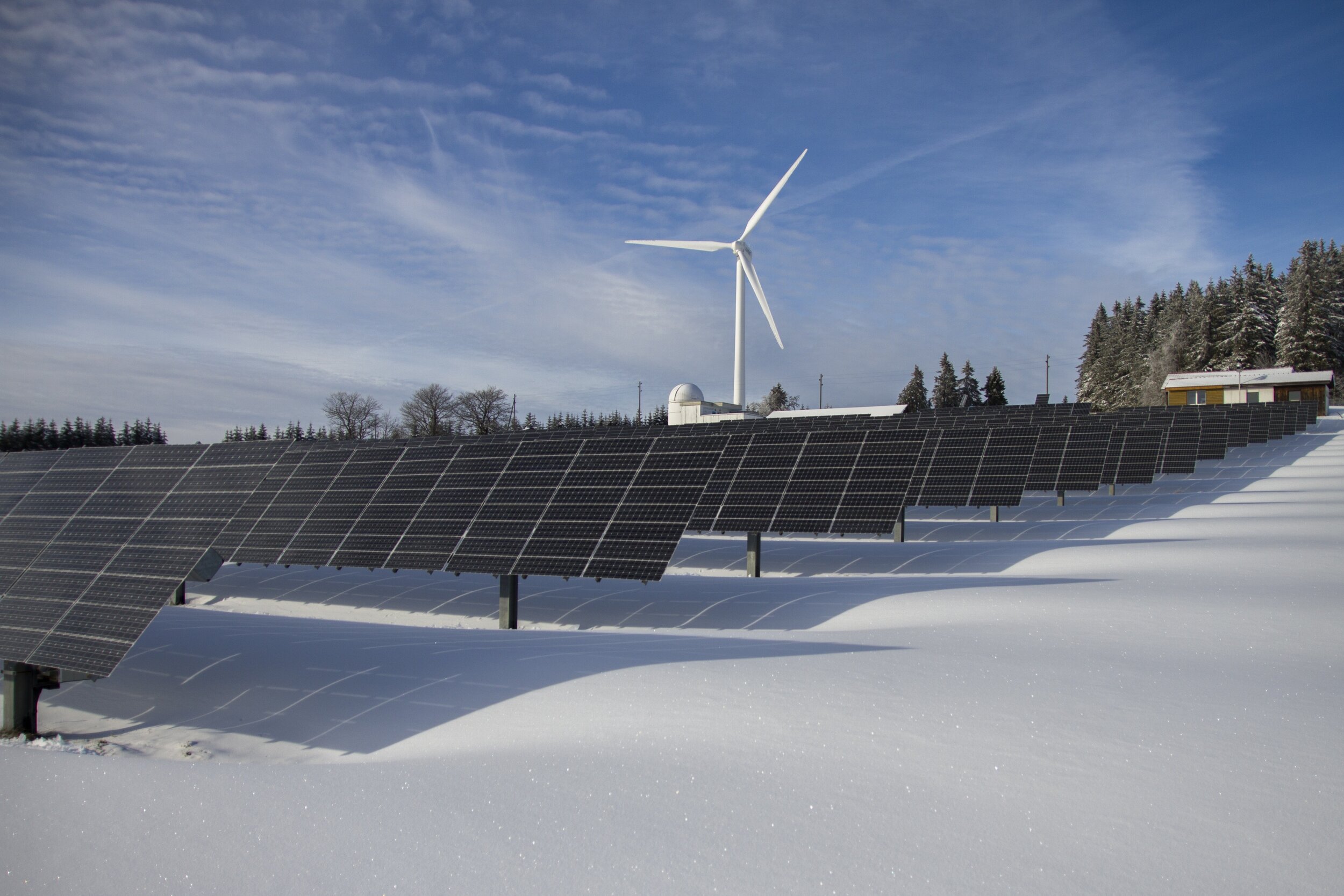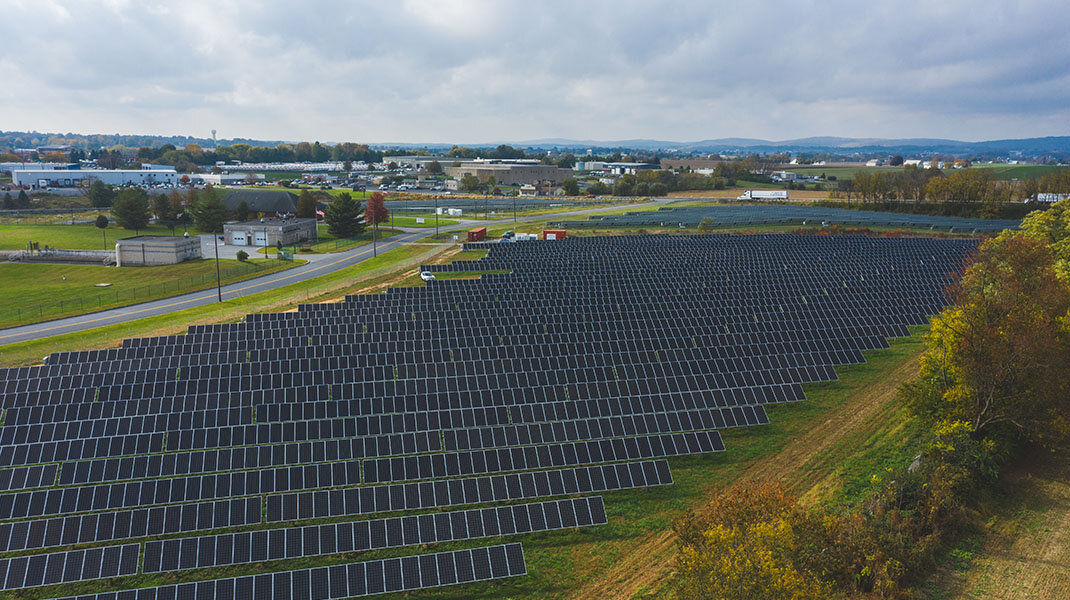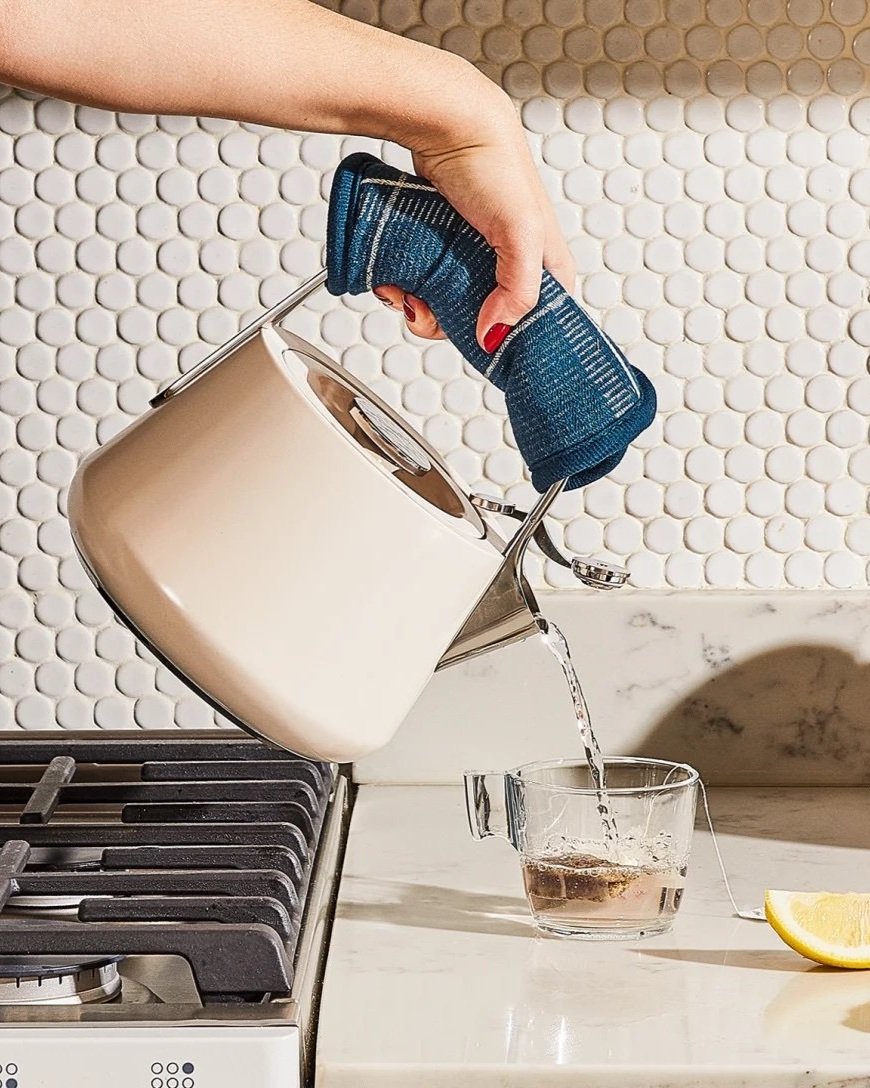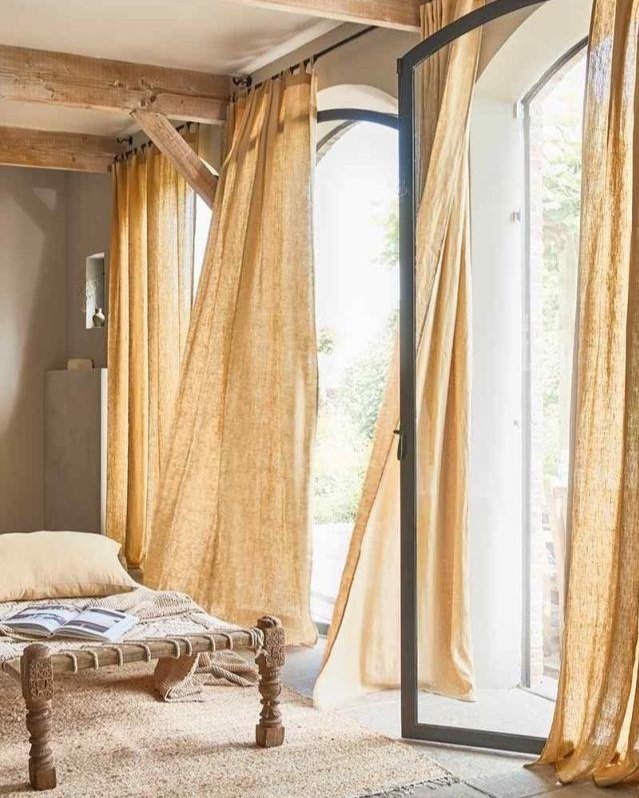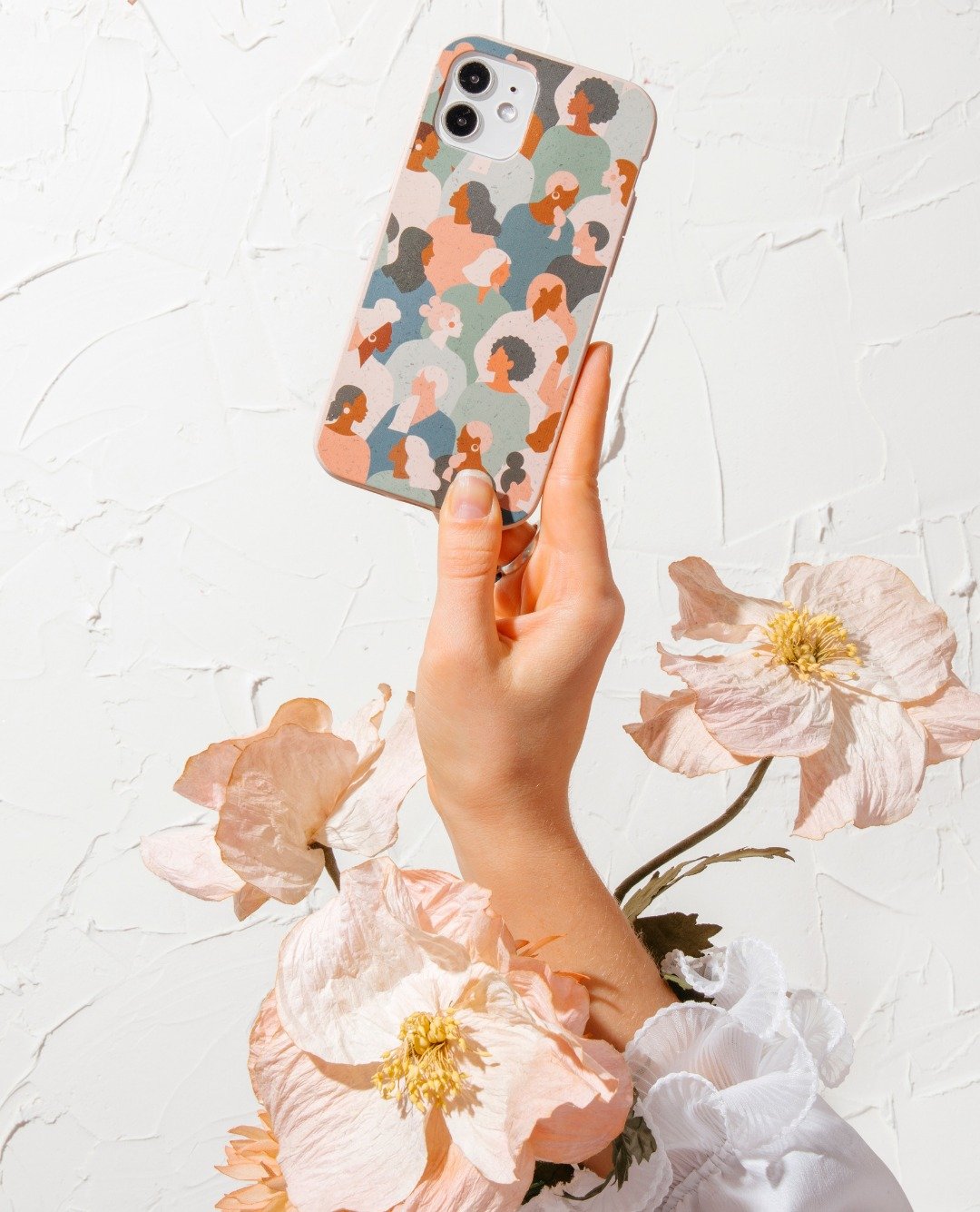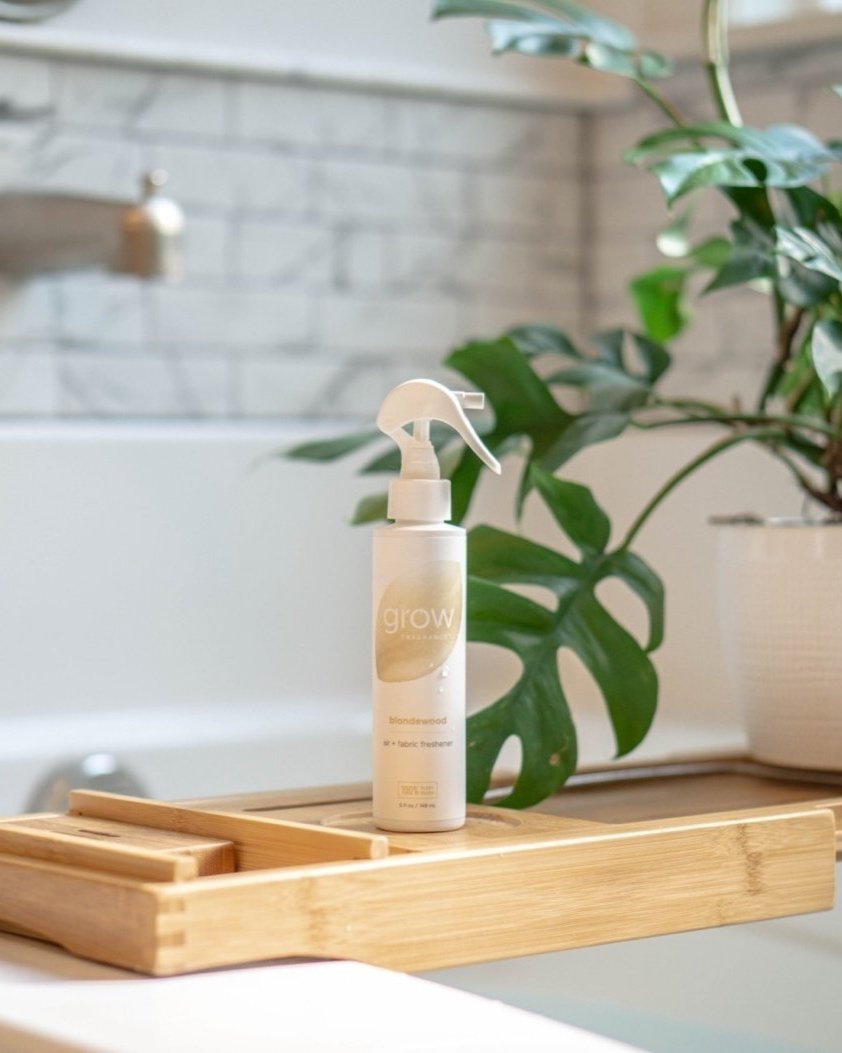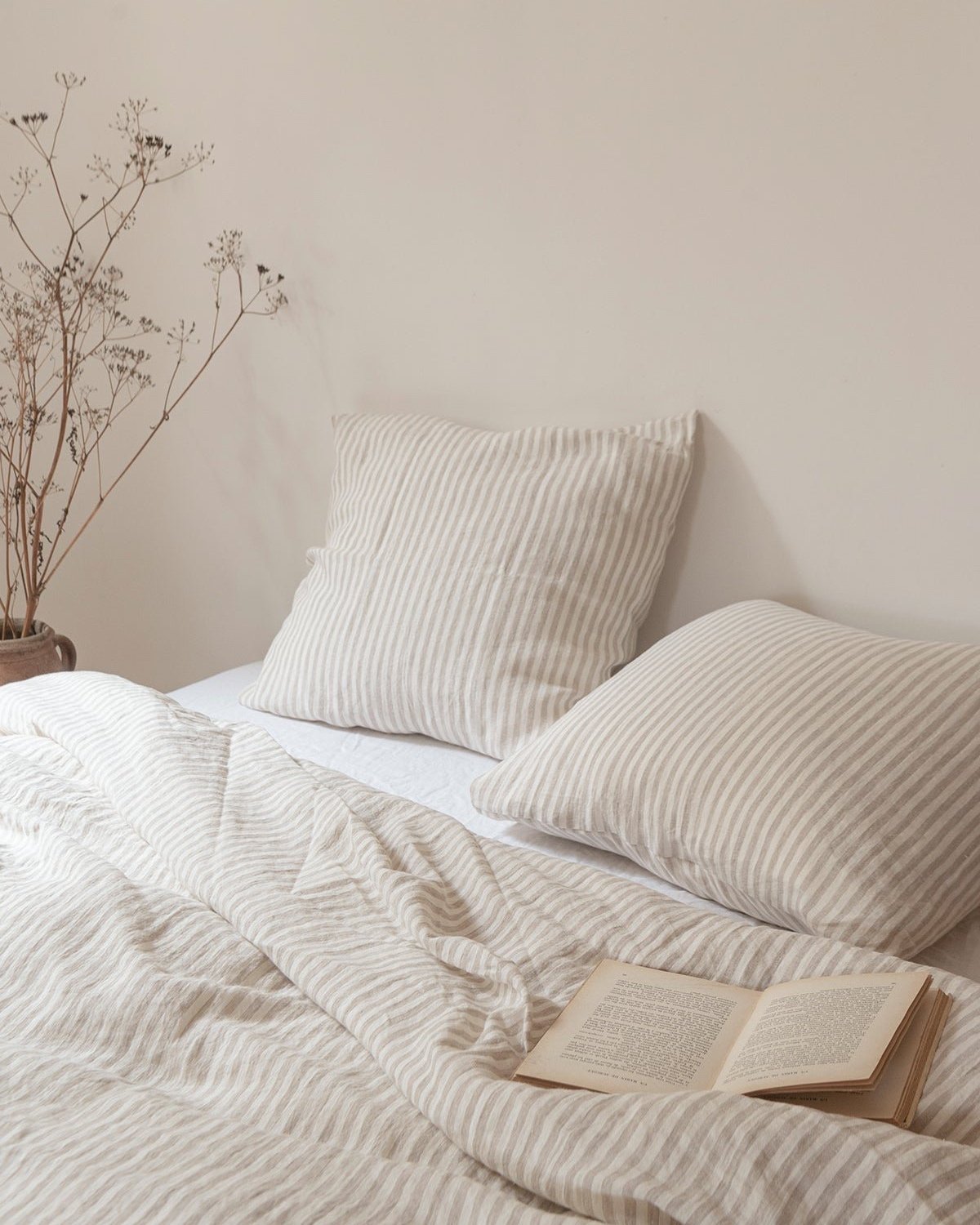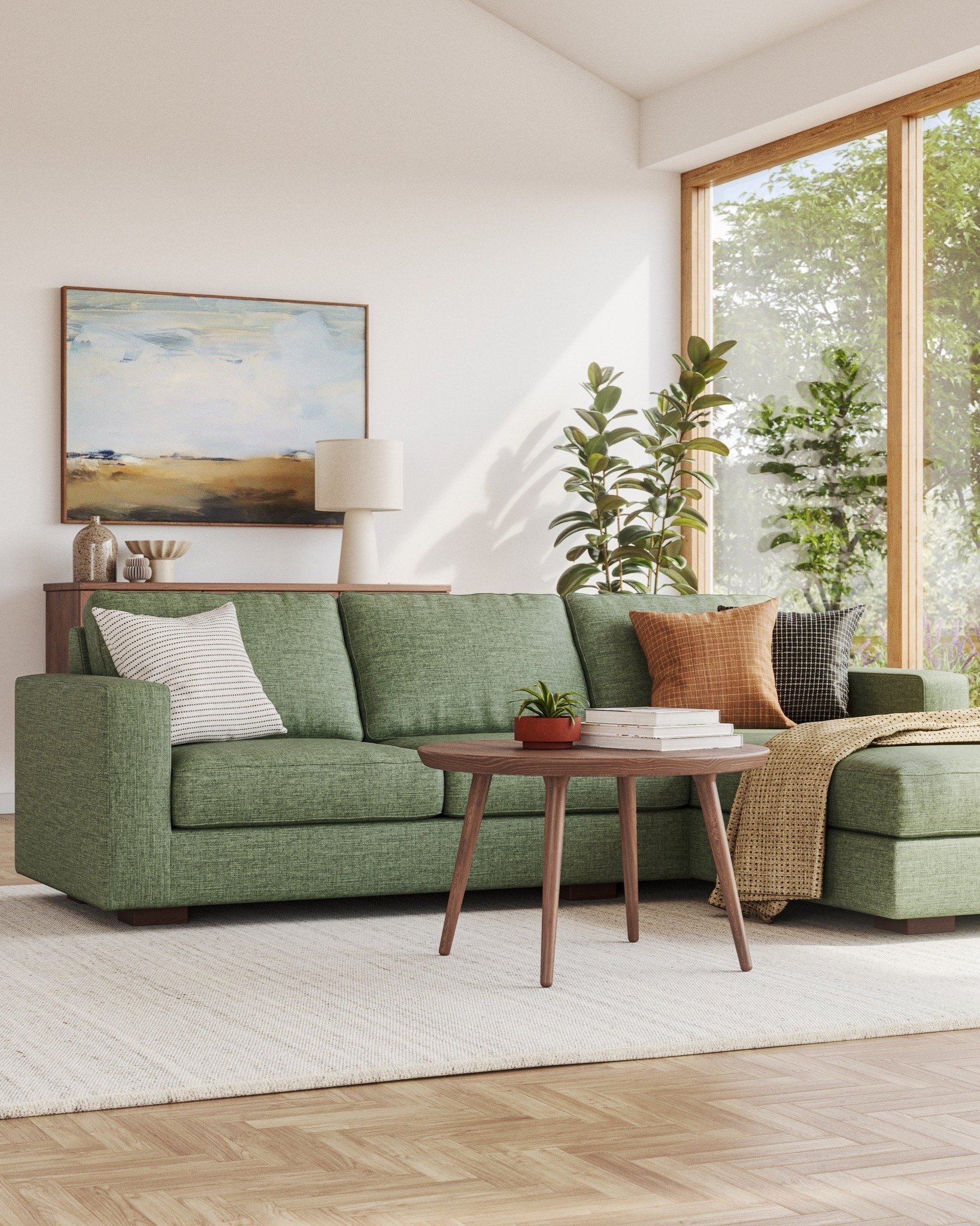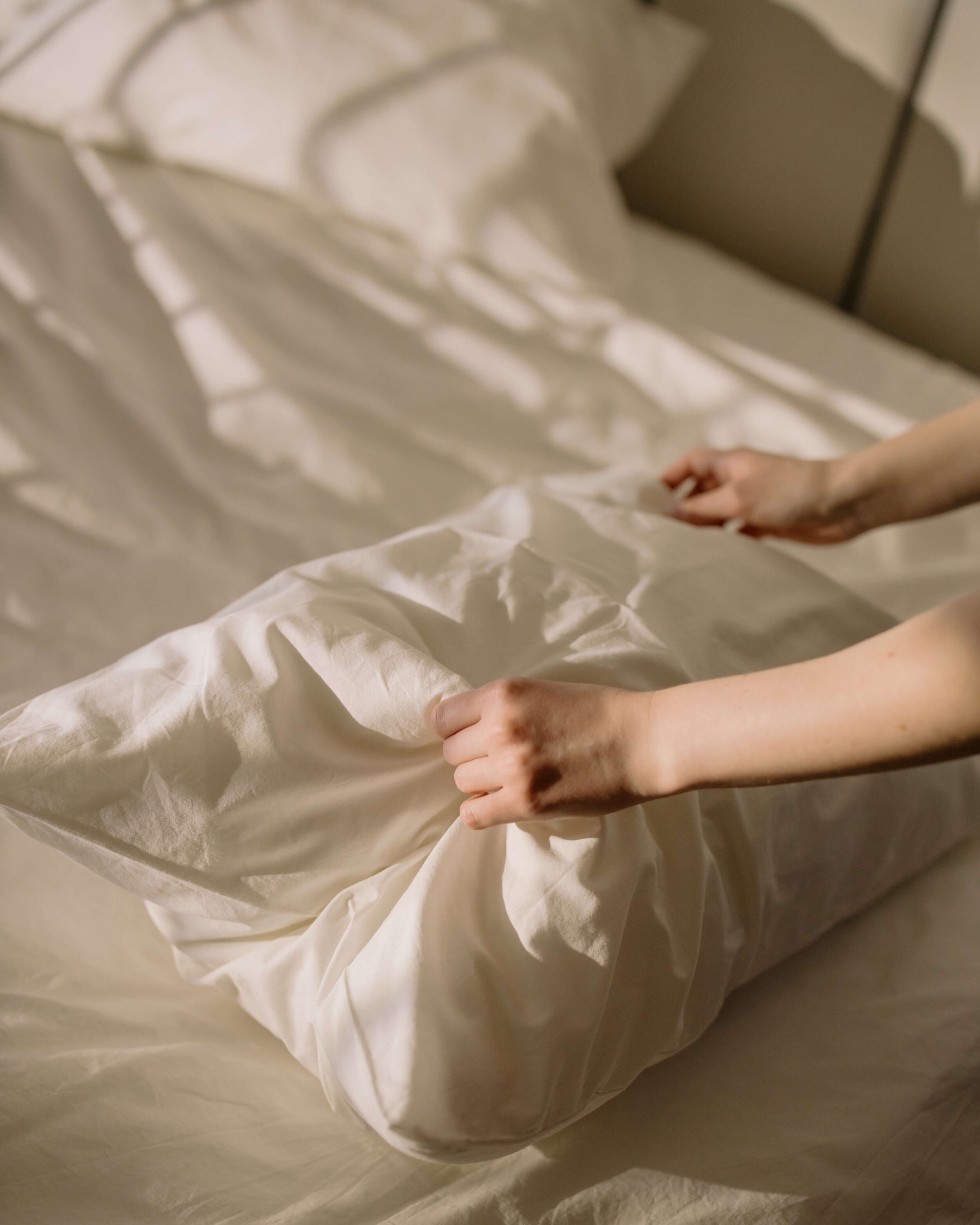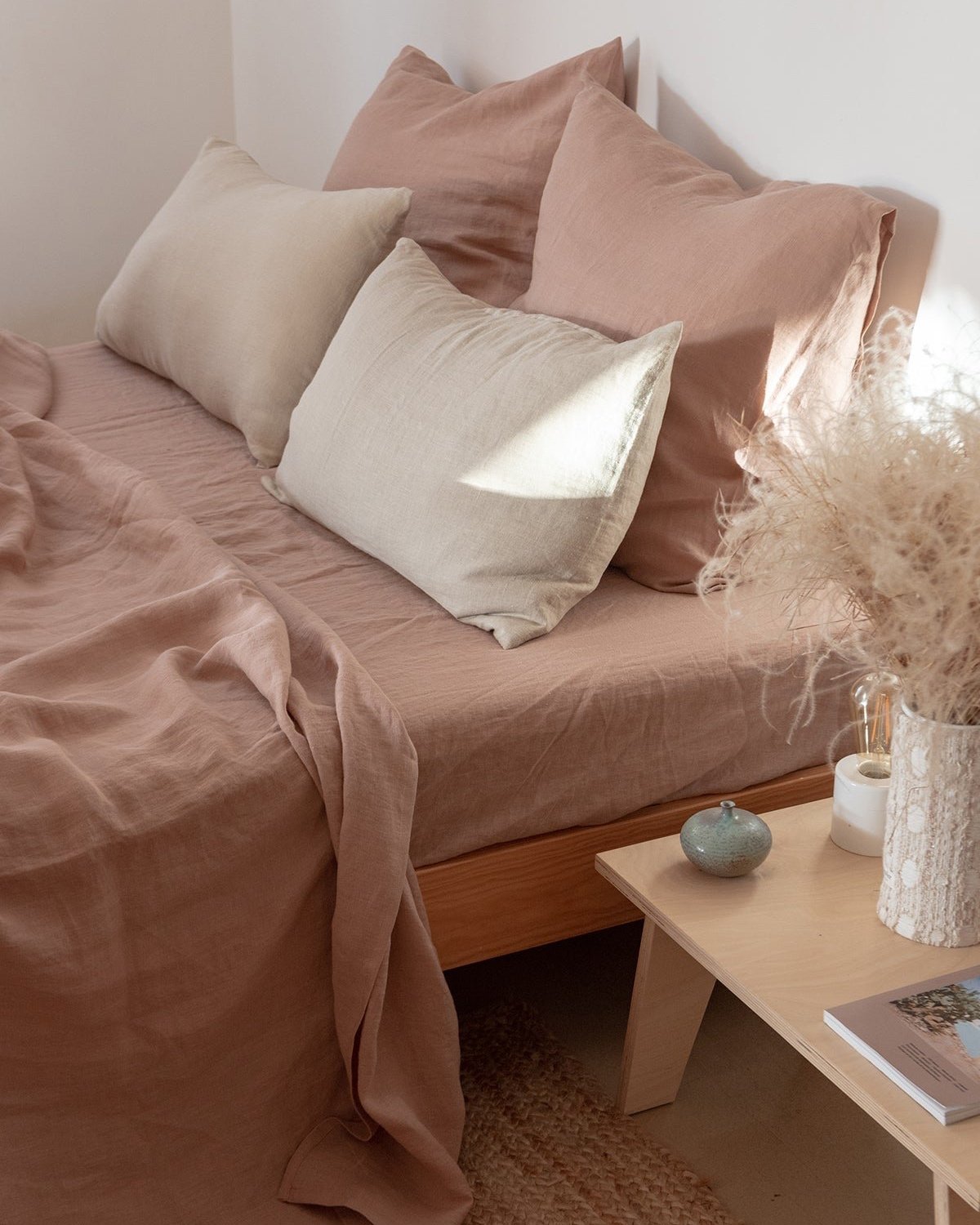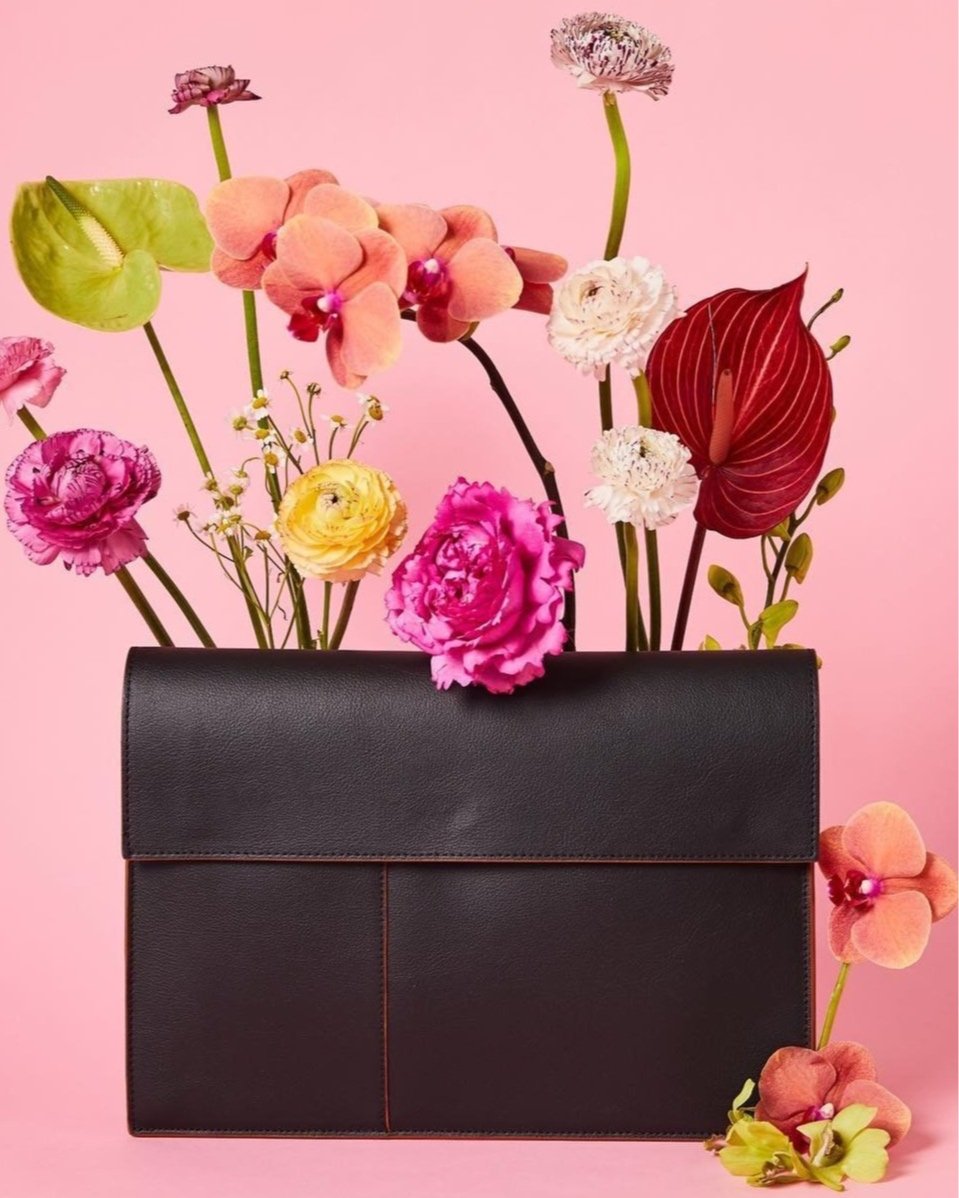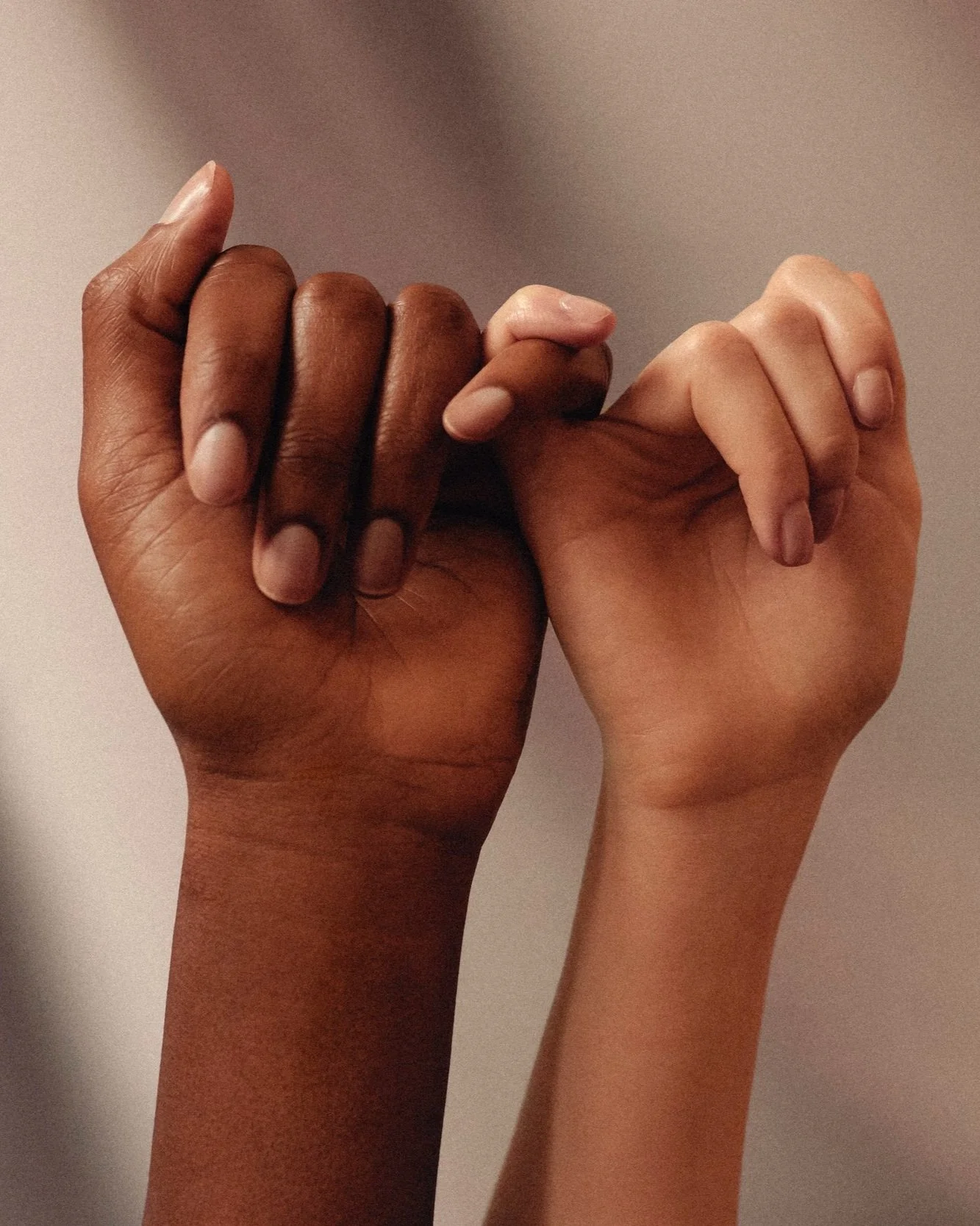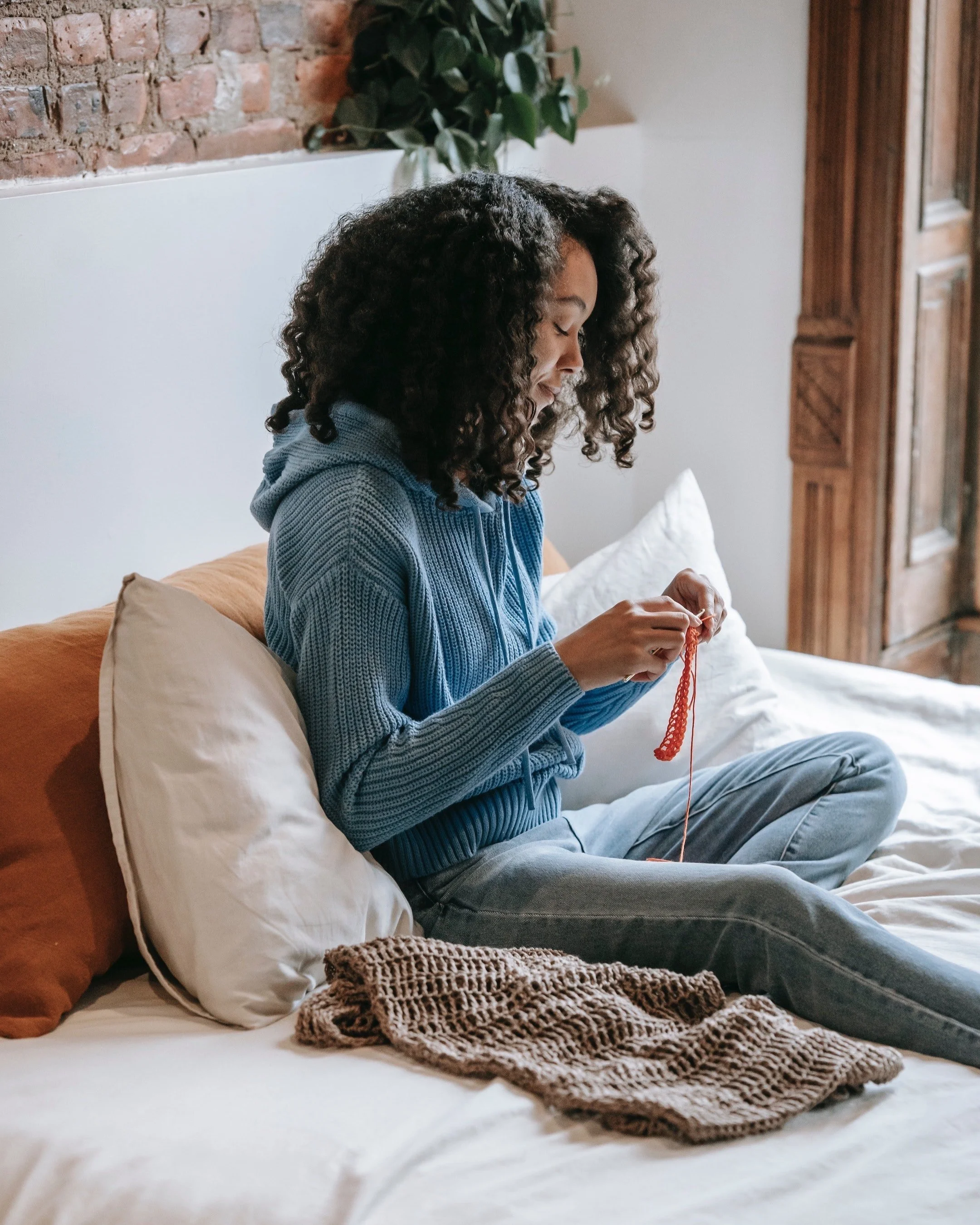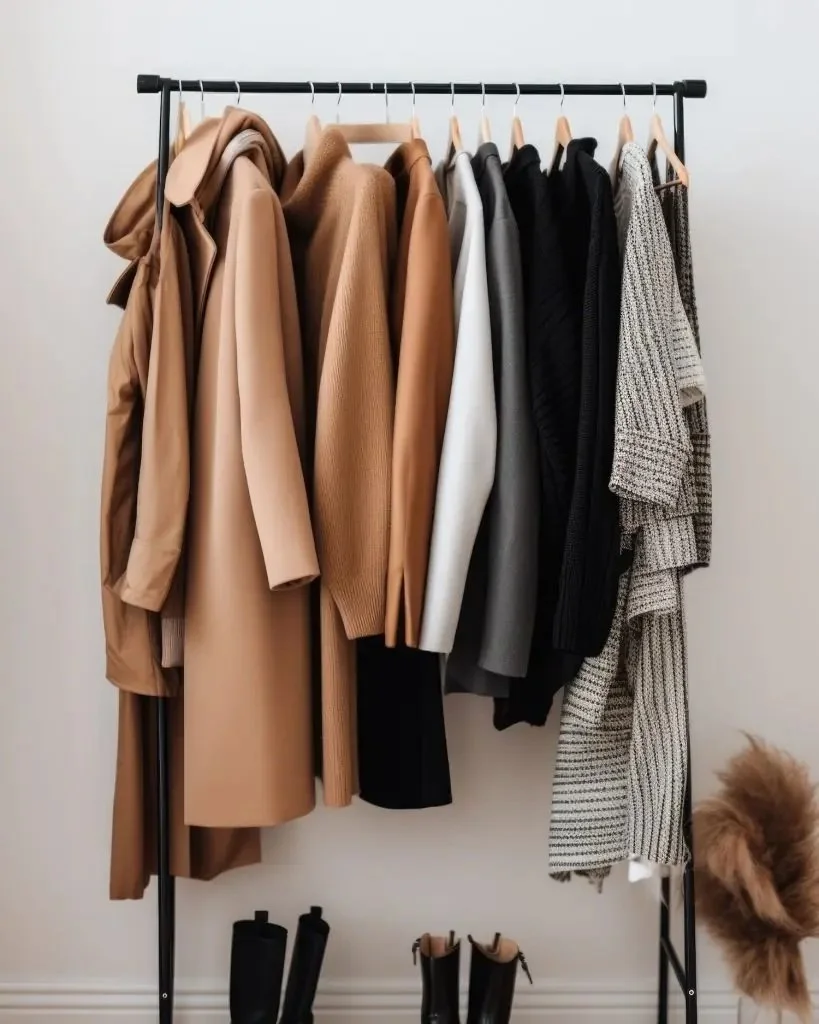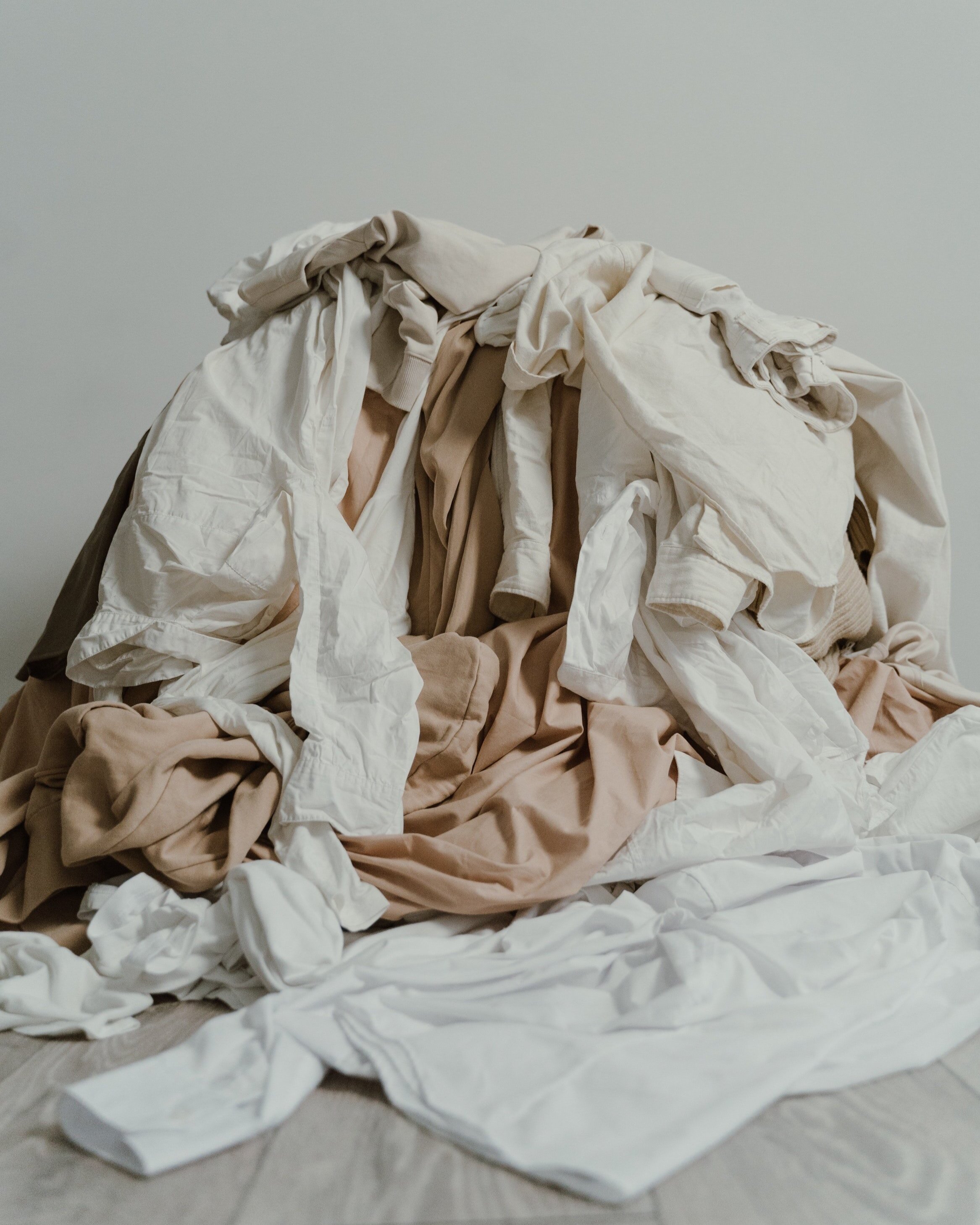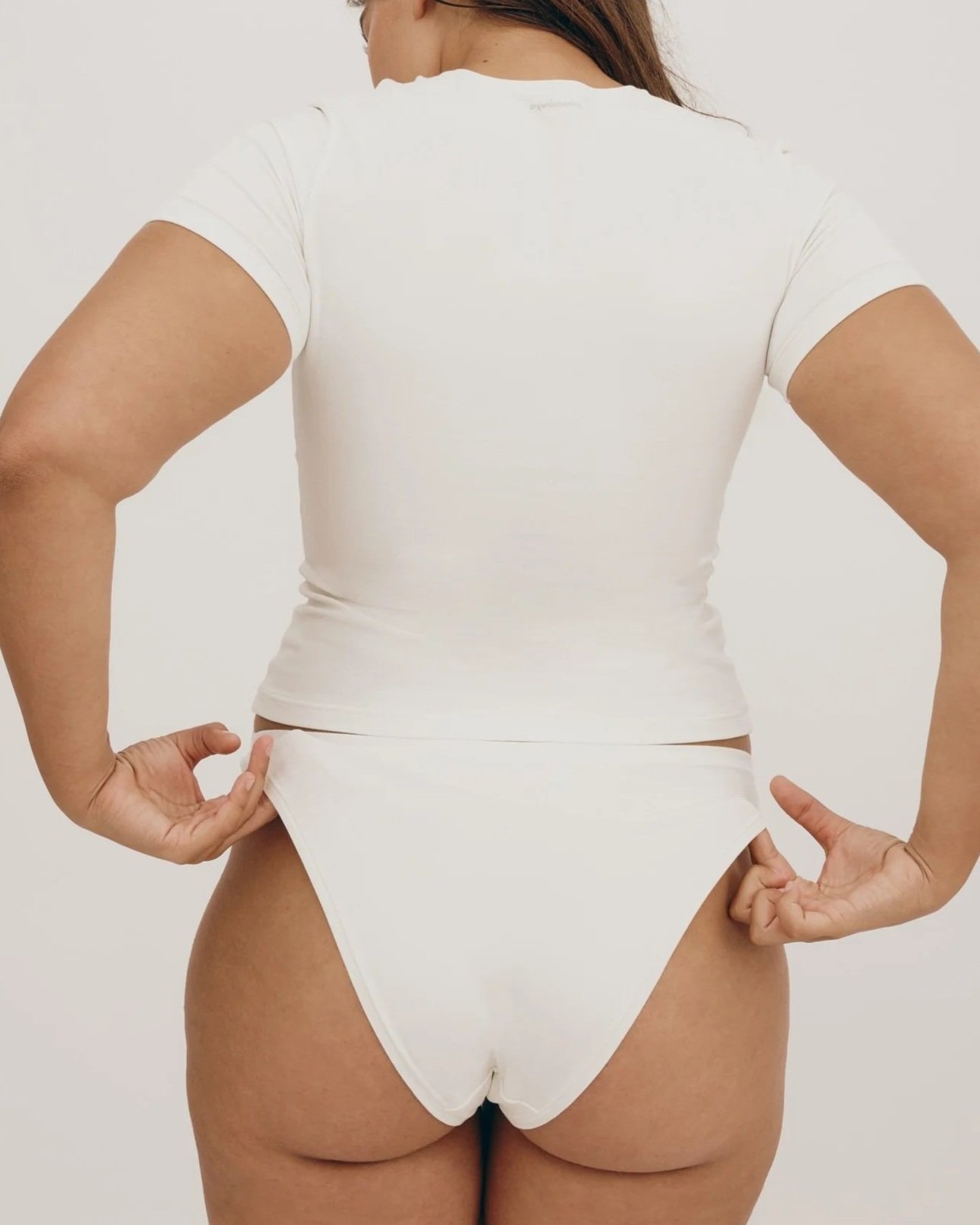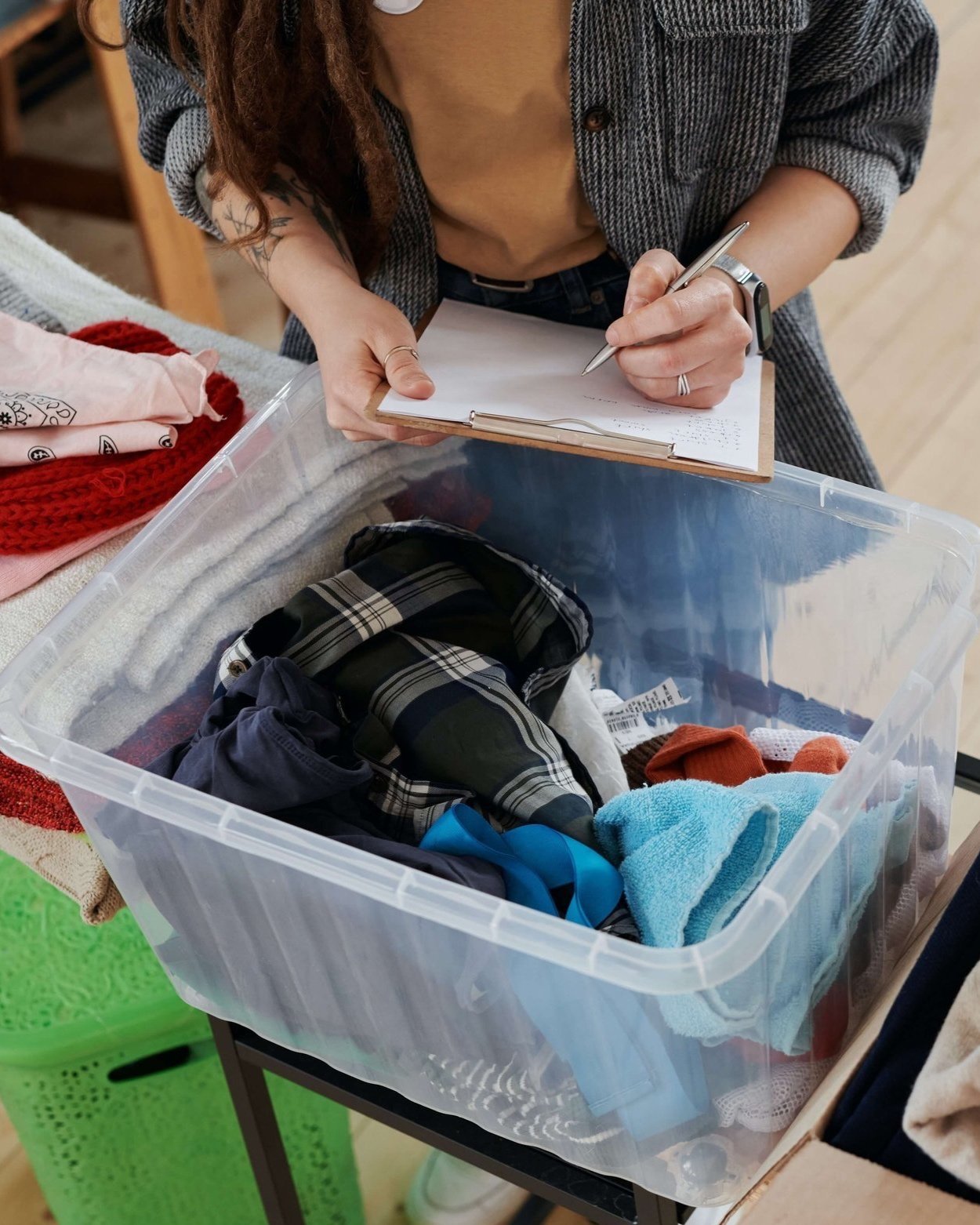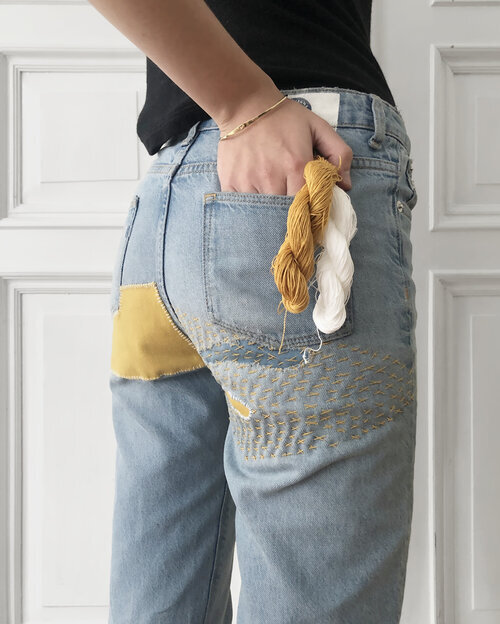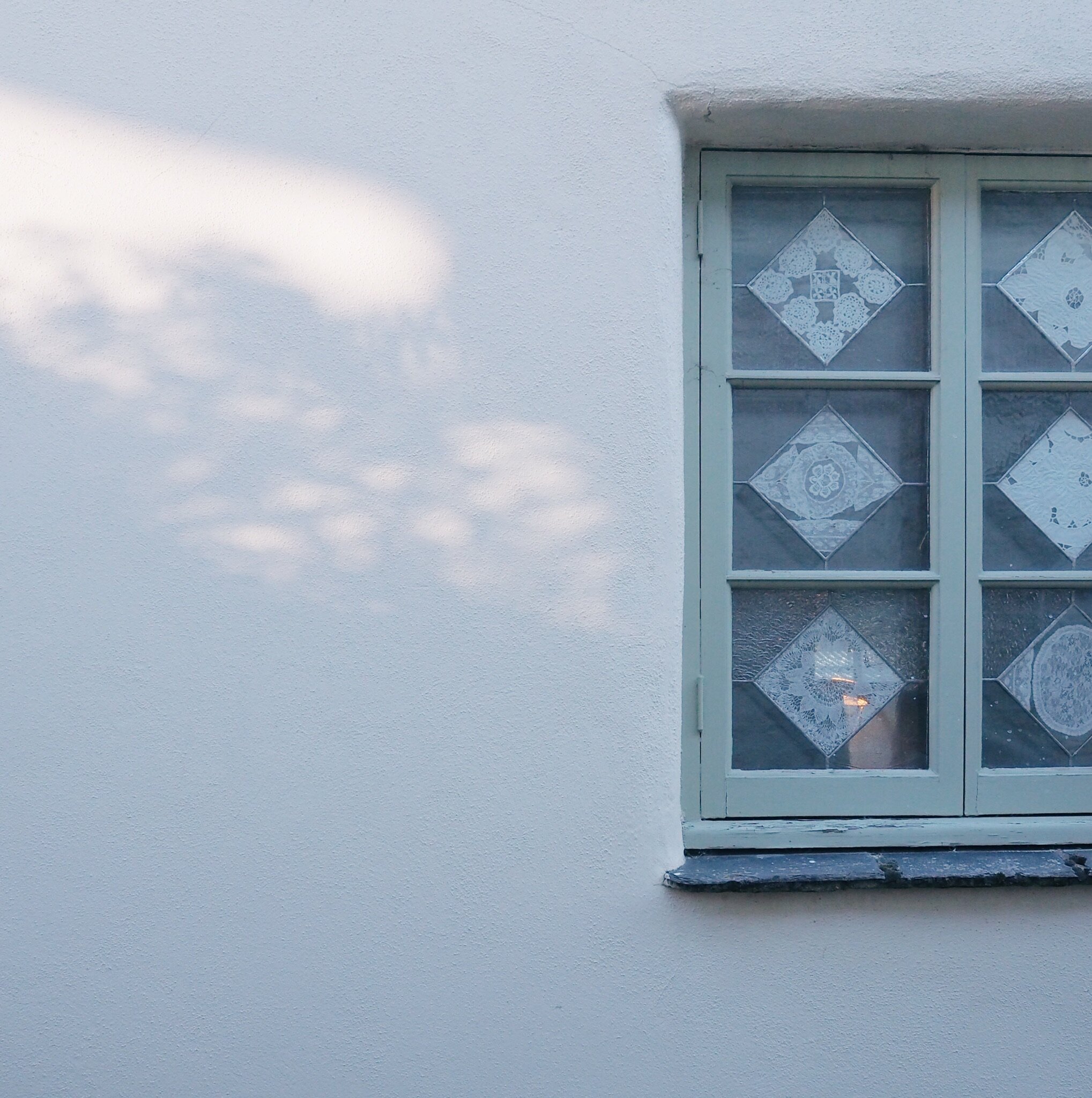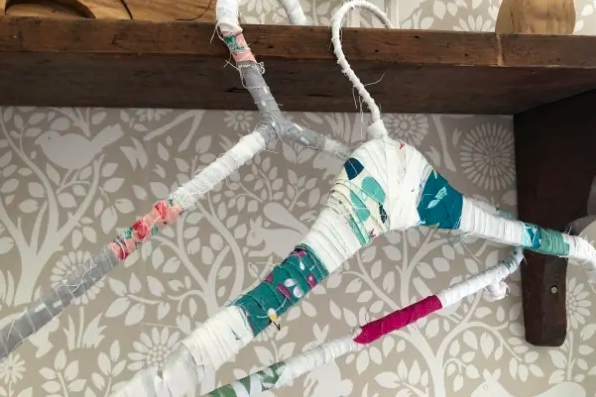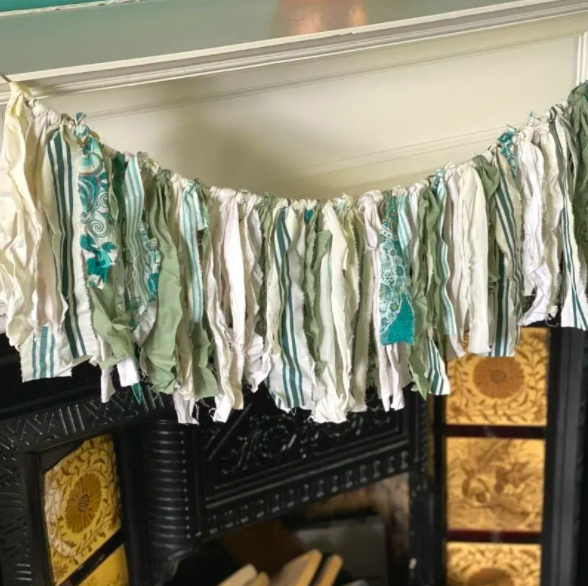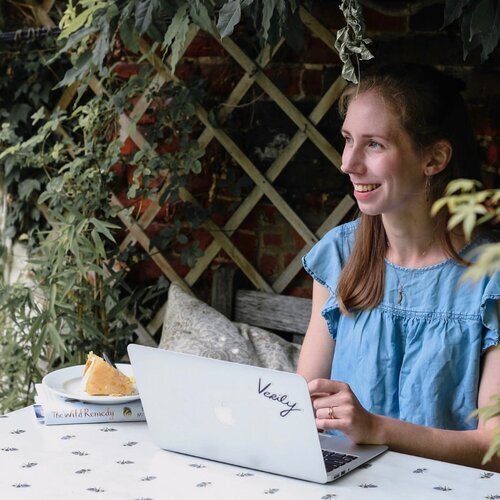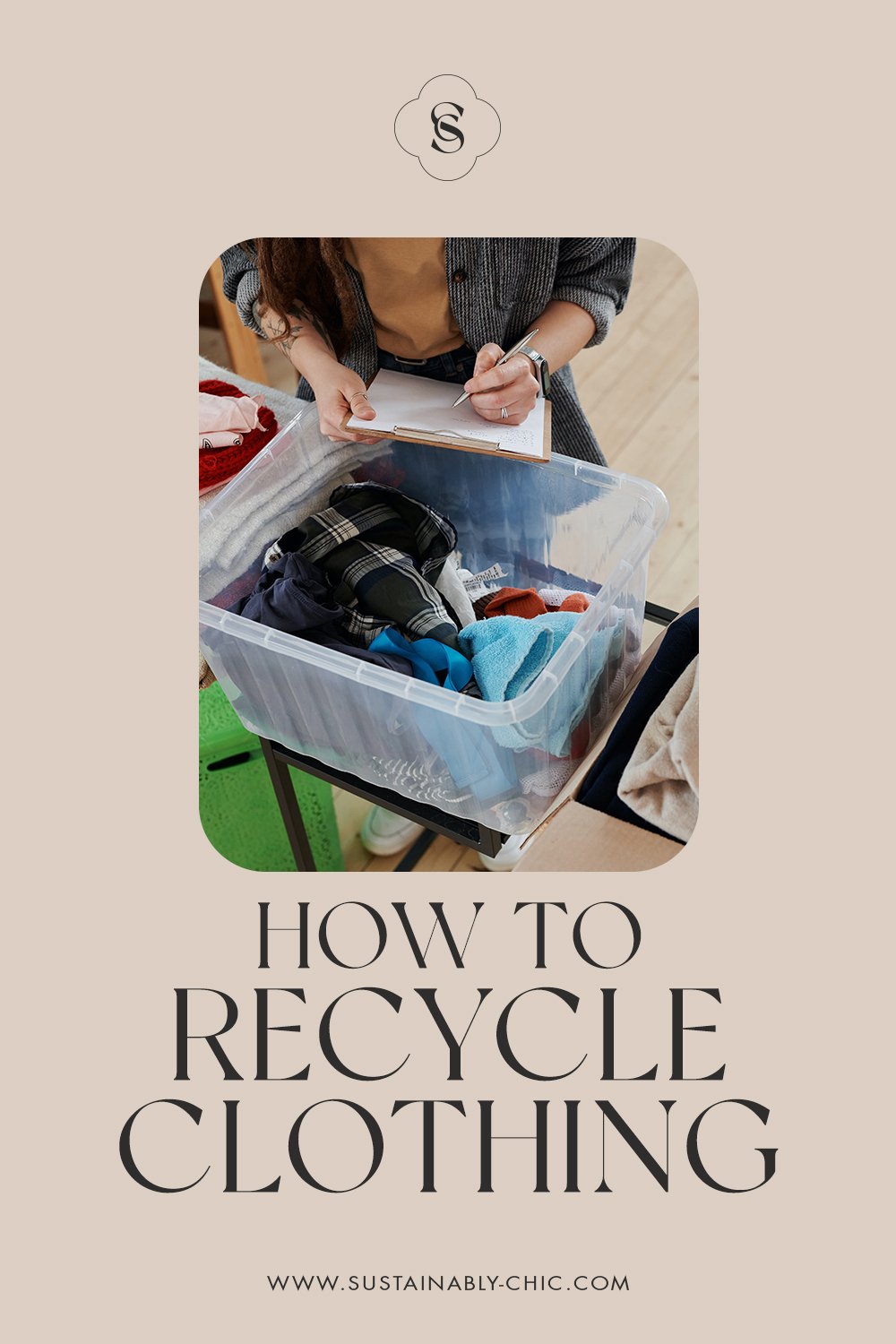A Beginner’s Guide to the Visible Mending Trend
Mending clothes is a beautiful, meditative way to extend the life of your clothing, and it makes a powerful statement about your values. In this article, we’ll explore different types of clothing repair, and you’ll learn how to get started with your very own needle and thread next time your favorite sweater or pair of jeans develops a tear or a hole.
It’s taken me a while to get over the embarrassment of being the younger sibling, wearing my older sister’s hand-me-downs at school, but these days I take pride in repairing my clothes and making them last for as long as possible.
Each item of clothing in my wardrobe tells a unique story, and the ones I love the most are usually the ones I’ve had the longest; my grandmother’s black beaded 1950s dress that I wore on my first date with my husband, the supremely comfortable and flattering pair of jeans that I bought after becoming a new mother that made me feel like myself again for the first time since my body went through so many changes. Thinking of each item in my wardrobe as an old friend helps me make the effort to extend the life of my clothing by looking after it properly and repairing it when it starts to show signs of wear and tear.
Repairing your clothing can feel daunting if you’re not used to sewing; we tend to worry that our sewing skills aren’t up to scratch and that we’ll do it wrong or make it worse. But with a little patience and determination, learning to repair your clothes is a really empowering and creative way to build a more sustainable wardrobe. After all, as the saying goes, the most sustainable wardrobe is the one you already own.
Photo credit: Sophie Caldecott
Why Mend Your Clothes?
The polluting nature of the fashion industry is well known; it’s clear by now that if we want to play our part in fighting climate change, brands need to adopt a circular mentality that takes the end of the life of the clothing into consideration when designing new clothing. We all have a part to play in this shift away from waste; with over 11 million tons of unwanted textiles going to landfill in the US every year, we need to slow down our consumption and learn to extend the life of our clothing.
Mending clothes has become rather an endangered art form over the past few decades, as the fast fashion model of consumption often means it’s easier and cheaper to buy new clothing than to repair old clothing, and many of us aren’t learning the basic sewing skills we need to do simple repairs, like replacing buttons and darning socks. Thankfully, though, as well as the rise of circular fashion, the visible mending trend has really taken off recently, and more and more people are now taking pride in expressing their individuality and sustainable values through the quietly revolutionary act of mending their clothes.
As ethical fashion campaigner, co-founder of the Fashion Revolution movement, and author of Loved Clothes Last, Orsola de Castro wrote, “We don’t have to go far to gather the knowledge to make our clothes last longer; a small generational rewind is enough, because reusing and recycling are as old as time, the knowhow is engraved in all cultures and we are hard-wired to it – only now the benefits and implications are wider than ever.” If you don’t know where to start with clothing repairs, why not ask an older generation friend, neighbor, or relative if they remember how to sew and can teach you some basic stitches and techniques?
What is Visible Mending Versus Invisible Mending?
Visible mending is repair work that is deliberately made visible; the repair is turned into a feature of the clothing using brightly colored or contrasting threads and patches on repaired areas of clothing.
Photo credit: Sophie Caldecott
In contrast, invisible mending is the type of clothing repair that tries not to draw attention to the area that has been mended, blending in and trying to return the item to as close to its original condition as possible, rather than making the repair or change stand out. When doing invisible mending, you’ll want to use a thread that’s as close to the color of the fabric that you’re repairing as possible, and you’ll generally use simple, small stitches, turning your clothing inside out and hiding as much of the repair work on the inside and lining of the clothing as possible.
Visible Mending Techniques
The visible mending trend encourages us to be playful with our repairs, rather than perfectionist: I started with my children’s clothing, picking pieces that were cheap and that were so badly torn or stained that I didn’t have much to lose by trying to repair them. The stakes were low, and so I could just have a play around with some brightly colored embroidery thread and have some fun trying to stitch up a hole in the knee of some trousers with a pink heart, or making a patch to cover a big stain on the front of a dress.
Photo credit: Sophie Caldecott
Somehow—to me at least—visible mending feels more accessible to someone who’s not a professional sewer, though of course different types of repairs will be appropriate for different clothing and aesthetic tastes.
One of the fun things about visible mending is that the options are limitless, and your own style will develop as you make a habit of repairing your clothing. With smaller holes and tears, you can try embroidering a shape over the area that needs repair, and for bigger areas, you can have a play around with adding patches of fabric and embroidering the edges or patterns across the patches.
Techniques like Swiss darning can be done in contrasting color threads on holes or patches of wool that are starting to wear thin (it’s always best to start a repair before it gets too bad, rather than once a lot of the fabric has disintegrated or the hole has become too big).
Japanese culture has also had a huge influence over the visible mending movement. You may well have heard of the ancient Japanese aesthetic of Wabi Sabi designed to emphasize and celebrate the life and wear, seeing it as a way to make something more beautiful in its “imperfection” rather than something to be ashamed of.
Two Japanese mending techniques that apply a similar principle to clothing repairs, turning the repair into something of beauty rather than something to be hidden, are called Boro and Sashiko. Boro is a type of patching that covers the area in need of repair with patches secured with neat lines of running stitch, and Sashiko stitching creates a decorative pattern that can reinforce fabric while beautifying it at the same time. In traditional Sashiko embroidery, white thread is used over indigo fabric; as Sashiko artisan Atsushi explains, “Sashiko is a form and a process of stitching to appreciate the fabric and what we have.”
Boro and Sashiko stitching can be combined to patch and add pattern to clothing that needs reinforcing and repair to make a piece of clothing last longer and give it a whole new lease of life as a beautifully embellished statement piece.
How to Get Started and What You Need In Your Sewing Kit
Taking the time to learn a few basic stitches will stand you in good stead for your clothing repairs. Embroidery artist and author Christi Johnson shares tutorials on the basics of different types of stitches, including running stitch, back stitch, stem stitch, chain stitch, blanket stitch, and more, in her free resource library.
Photo credit: Sophie Caldecott
It’s a good idea to prep your sewing kit in advance so that you have the right supplies to hand when mending your clothes. Here are some basic sewing kit supplies that will serve you well in your repairing adventures:
Needles: You’ll need various sizes and strengths of needle, so get a good selection pack. The tougher the fabric, the stronger the needle will need to be. Make sure whatever pack you get includes some darning needles.
Threads: You’ll also need a variety of threads in different colors and thicknesses. It’s a good idea to start with some basic neutral colored cotton reels, as well as a selection of colorful embroidery threads, and worsted wool.
Pins (and a pincushion for quick and easy access): You’ll need pins to hold any patches in place while you sew, and also to hold pieces of fabric in the right position while you repair tears.
Thimble: This isn’t 100% necessary, but can protect your fingers from pricks while you stitch.
Sewing scissors: Not all scissors are equal, and it’s important to have some sharp sewing scissors and fabric scissors to hand so you can cut your fabric and threads easily.
Darning mushroom: A darning mushroom can help you hold things like socks in the right shape while you do your repairs so that you don’t sew up an area only to discover it has become misshapen.
Embroidery hoop: Don’t underestimate the importance of an embroidery hoop while working on an area of your clothing. I tried embroidering over a stained area on my daughter’s dress without using an embroidery hoop and was really disappointed when I realized it had bunched up the fabric so that it hung wrong when she wore it afterwards. An embroidery hoop stretches the fabric you’re working on flat to avoid bunching.
Scraps of fabric: Start a rag bag where you can keep scraps of leftover fabric from sewing projects, or clothing that’s beyond repair but can still be cut up and used for patches. You’ll soon have a great stash for repairs and sewing projects.
10 Books on Mending Clothes to Inspire You to Repair and Re-wear
As well as YouTube videos and learning in-person from the elders in our lives, there are plenty of great books that can inspire you and support you as you learn to repair clothing.
Loved Clothes Last by Orsola de Castro
Mystical Stitches by Christi Johnson
Visible Mending by Arounna Khounnoraj
Mend and Patch by Kerstin Neumüller
Wear, Repair, Repurpose by Lily Fulop
The Art of Repair by Molly Martin
Mending Matters by Katrina Rodabaugh
Make, Thrift, Mend by Katrina Rodabaugh
Mending Life by Nina and Sonya Montenegro
Fix Your Clothes by Raleigh Briggs
Once you make a habit of mending your clothes you may well discover that you enjoy taking the time to indulge your creative side, developing your own style of mending that works for you and your wardrobe. And if you find you don’t have the time or patience for sewing yourself, don’t worry: mending clothes can also be outsourced. In fact, it’s a great idea to support the repair economy by finding a local tailor who can repair and alter your clothing for you.
Shifting our habits from a throwaway culture to a more sustainable culture doesn’t have to be hard; start small, and remind yourself why extending the life of your wardrobe is important to you. With a little practice and experimentation, you’re bound to discover a repair routine that works for you.
About the Author
Sophie Caldecott is a freelance writer living in a cottage on the edge of the moor in the South-West of England. She writes about grief, empathy, ethical fashion, and the things that connect us and make us human. You’ll most likely find her cozied up by the fire with a mug of hot chocolate and a good book.
WANT TO FIND SUSTAINABLE BRANDS? VISIT OUR BRAND DIRECTORY!
Our Brand Directory is home to hundreds of sustainable brands, from makeup to cleaning supplies, from underwear to shoes. We have broken everything down by category for easy shopping, along with discount codes unique to Sustainably Chic viewers.

